Health & Wellness . . . with Jennifer Render


Jennifer Render is a Certified Life Coach specializing in Stress Management. She is also an Usui Reiki Master Practitioner and Teacher and the founder of Tejomaya Wellness. Things making the top of her gratitude list are chai tea, her dog, Harrison and every Beatles song ever written.
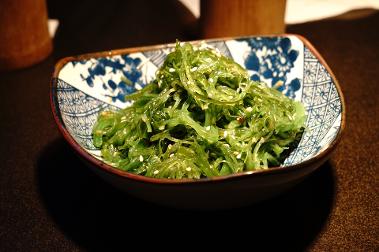
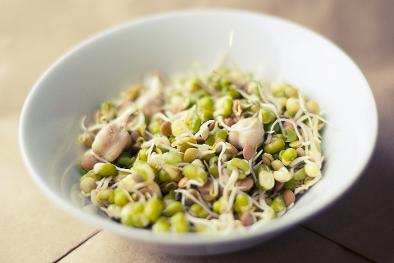

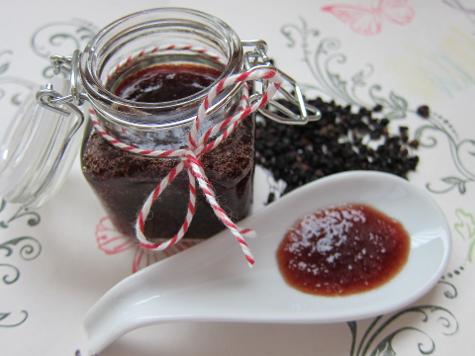
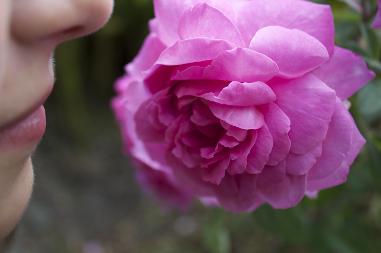
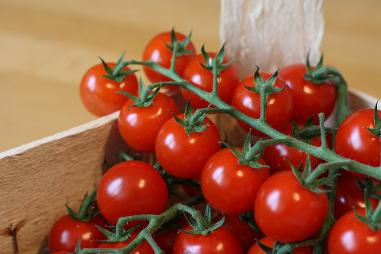

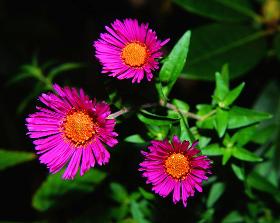
Vitamin Vitality: Getting the Most Out of Your Dietary Supplements
by Jennifer Render
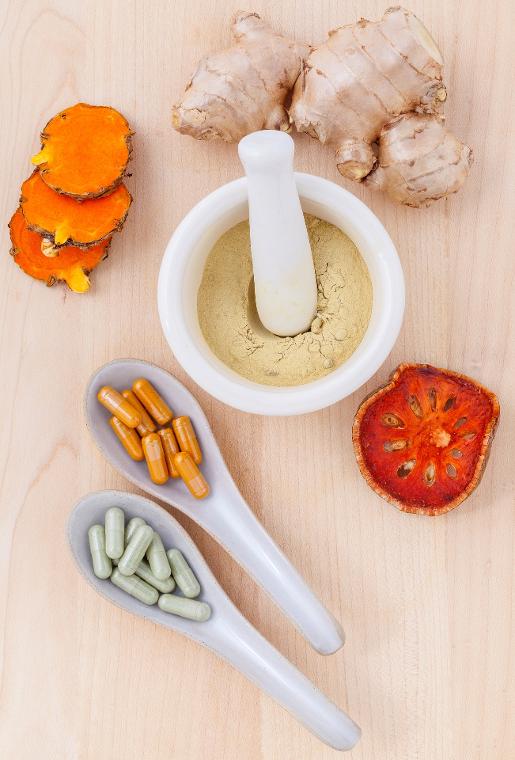
Taking a walk down the supplement aisle can be confusing. Do I refrigerate this probiotic? Should I take an omega every day? Do I take this vitamin with or without food? It can be hard to know what to take, when to take it, and how to care for our supplements once we bring them home. This simple guide can help you make educated choices during your next trip to the health food store.
Covering Your Bases – We use supplements and herbs for a variety of reasons. We might reach for B-12 for targeted support when we feel tired or stressed. Perhaps we’ll seek some elderberry extract for acute symptoms caused by the flu or a cold. Possibly the most popular reason to take supplements, though, is to maintain our current wellness. In this case, making sure we have covered all of our bases is paramount to the goal. Most health care professionals recommend taking a broad-spectrum multivitamin , a marine or plant based omega for brain support and healthy inflammatory response, and a multi-strain probiotic for gut health and ideal immune function. These top three supplements will likely not be met with much argument, but it’s still smart to talk to your doctor before beginning a basic supplementation routine and when branching out to try anything new.
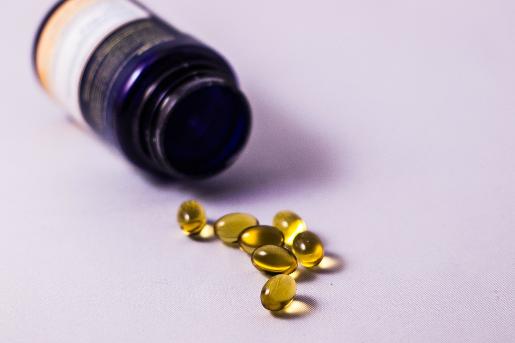
Supplement Storage – Unless the label specifically indicates that a supplement must be refrigerated, keeping them in a cool, dry cabinet where they are not exposed to light is the best way to keep them potent. Both keeping them too warm or too cold can introduce moisture into the bottle, which can cause them to degrade. It’s also wise to keep an eye on the “Best By” date to ensure you are getting the most bang for your buck. While most supplements are good for up to six months after their guaranteed potency passes, they can lose some of their strength and not be as beneficial as they would have been prior to the date stamped on the bottle. If you’re not sure if you’ll be able to finish them yourself, look for smaller quantities or talk to a friend about splitting the bottle and the cost.
Knowing When to Take Them – For the most part, supplements function best in the body when taken with food. This is especially true of fat soluble vitamins like A and E, and B Vitamins, which can cause slight nausea when taken before eating. Some supplements absorb better when taken on an empty stomach, however. This is true of fiber, which can cause bloating and gas when taken with food, most herbs, and amino acids. The only one that seems to wind up on both sides of the debate are probiotics, so it may be wise to split the difference and take one dose before the first meal of the day and the second one with lunch or dinner.
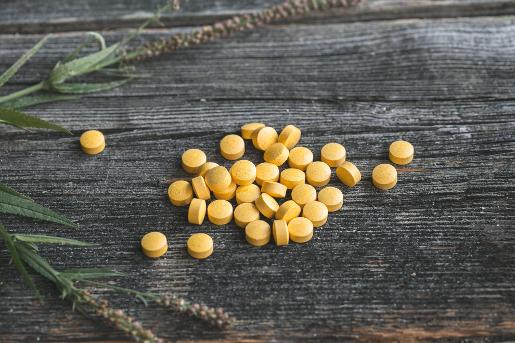
Using supplements to maintain health needn’t be stressful or intimidating. Keep these tips in mind to make your shopping trip easy and breezy. Let’s all raise a big glass of water to better choices and better health!
Lovely Locks: Eat Your Way to Healthy Hair
by Jennifer Render

Hair: we style it, we color it, and we even write musicals about it. Whether you keep it long or short, tame or wild, knowing how to improve the health of your hair can keep it looking its best. Supplements are a fantastic way to boost hair’s beauty and if you can afford them, there are a variety of great formulas out there. You aren’t stuck making sacrifices to fit them into your budget, however. With a few simple substitutions to your current diet, you can provide your hair with the nutrients it needs for growth, strength, and shine.
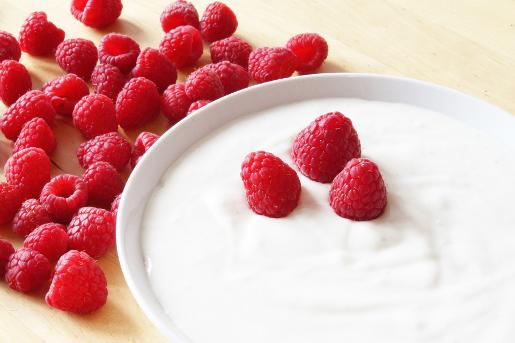
Pantothenic Acid for Growth: Some of the most popular shampoos on the market contain Pro-Vitamins, also known as pantothenic acid or B5. This vitamin helps stimulate hair growth by increasing blood flow to the scalp, and it’s found in things like chicken liver, avocados, and sunflower seeds. You can also find B5 in greek yogurt, which can be beneficial both consumed and applied directly to the hair as a masque.
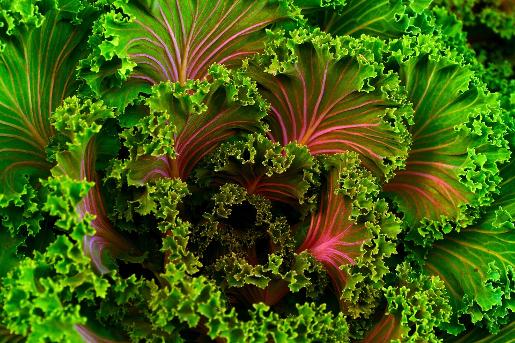
Greens for Strength: When hair lacks nutrients, it often shows up as brittle or broken strands. You might be surprised that one of the ways to strengthen and keep hair moisturized is by eating a salad. Getting a daily dose of green leafy vegetables, especially the dark ones like kale and spinach, will give your hair a boost of vitamins like folate, beta carotene, and Vitamin C, which will help fortify and keep strands strong.
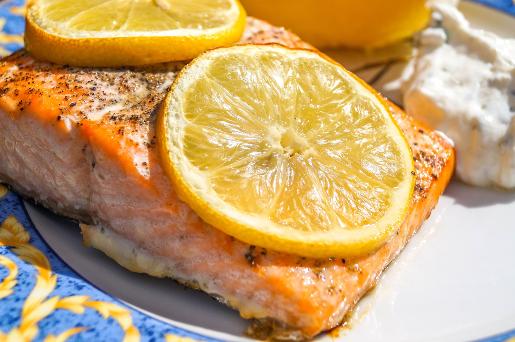
Omegas for Shine: Locks not mustering any luster? Cold water fish like salmon, mackerel, and sardines are, pardon the pun, packed with shine boosting omega-3 fatty acids. Don’t worry if you’re living the vegan or vegetarian life. You can still shine with omegas from pumpkin seeds, walnuts, seaweed and chia seeds.

No need to wig out. Healthy hair doesn’t have to cost you an arm and a leg. It starts in the kitchen, and small adjustments to your daily diet are all that’s needed to maintain a marvelous mane. Let your hair down!
Made in the Shade: A Simple Guide for Surviving Summer Sun
by Jennifer Render
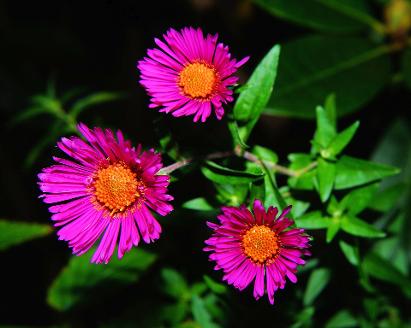
It’s heating up out there for those of us in the Western Hemisphere. The sun is high in the sky and summer is upon us. Days at the beach, family vacations, and outdoor parties are some of the best parts about the season, but being prepared can keep you out of hot water when it comes to heatstroke, sunburn, and dehydration.
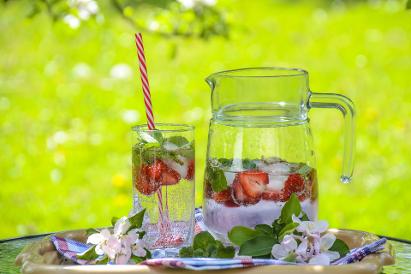
Drink Up: One of the best ways to help with heat this summer is to stay hydrated. H2O is still the best option, but if you struggle to drink enough of it you can add sliced citrus, berries, melons, or even cucumbers for refreshing flavor and a break from the norm. If you still need something with a little more taste, iced herbal teas and coconut water are satisfying, healthy options. Avoid caffeine and alcohol as they only contribute to dehydration, but if you simply must sip that margarita poolside, just remember that balance is your friend and follow it up with some ice water.
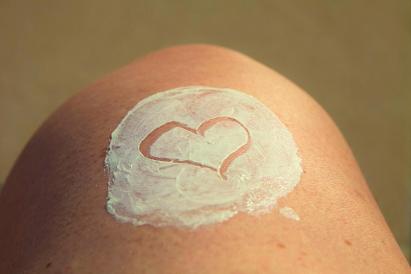
Always Wear Your Sunscreen: You might have heard this a lot as a kid, but thank your mom if you remember her warning before you walk out the door for a day in the sun. Melanoma is one of the most serious and most common types of cancer in the country, but with prevention it doesn’t have to find you. There are a number of natural sunscreens to choose from and once you’ve discovered the type that’s best for you, make sure to apply it twenty minutes before going out in the sun and then follow up every two hours or each time you swim or spend time in the water. You can also avoid sunburn by wearing a hat and making an effort to avoid direct sunlight in the afternoon, when it can do the most damage. If you end up with a sunburn, aloe is great old standby. Also look for calendula, a type of marigold that is incredibly soothing to burns of all kinds. Add a couple of drops of gentle essential oils such as lavender or helichrysum to your salves and creams for an extra dose of skin calming relief.

Stay Cool: This advice is more than a message we received from the classmates who signed our yearbooks. It’s critical for avoiding a serious condition that comes from being in the sun too long. Heatstroke occurs when the body overheats to a dangerous degree and is considered a severe form of hyperthermia. It is a medical emergency and it’s critical to get someone suffering from it to a doctor right away. Prevention starts with knowing what the symptoms of heatstroke look like, so you can recognize them in yourself and in others. Make sure to keep a close eye on kids and seniors as well, as they tend to be the most susceptible and least likely to communicate their discomfort. If you are going to be outside for prolonged periods of time, or doing anything strenuous like yard work or sports, take lots of breaks in a shady spot, or step inside at regular intervals to keep your body temperature from getting too high. If getting indoors isn’t an option, create a cooling body spray by pouring chilled water into a 4 oz glass spray bottle with few drops of peppermint essential oil to act as air conditioning for the skin. Add just a drop or two of fractionated coconut oil to help emulsify the mixture, shake, and spray on the back of the neck, chest and the face, making sure to avoid the eyes.
The sun certainly isn’t out to get you. Getting that dose of Vitamin D can invigorate the body and give us the energy to say yes to the fun activities that summer sends our way. Preparedness and prevention are all it takes to make sure your summer is less crazy and more lazy. Go soak up the sun!
The Sweet Life: Honey’s Surprising Health Benefits by Jennifer Render
It’s probably safe to assume that most of you have sweetened a beverage or baked goods with honey at some point in your life. Maybe you drizzled a little on your oatmeal this morning, or even swapped out refined sugar in favor of this nectarous, golden elixir. Honey is more than a thrill for our taste buds, though. It has been used as both a medicine and a food for centuries. It’s depicted in a 10,000 year old Spanish rock painting, it was left in the tombs of pharaohs by the Ancient Egyptians, and is mentioned in the sacred texts of almost every major religion. It’s been used to dress the wounds of Roman soldiers and clay tablet prescriptions have been discovered dating as far back as 2000 B.C. from the region of Nippur. It seems our ancestors knew that its value was worth more than its weight in gold. The good news is that you can still use honey today to address a number of health concerns and reap its tasty benefits for yourself.
Honey is full of antioxidants, including phenolic compounds like flavonoids. These antioxidant compounds have a host of benefits, including lowering blood pressure, decreasing bad LDL cholesterol while increasing good HDL cholesterol, and lowering triglyceride levels. All of these benefits can have positive effects on heart health and show promise in assisting Type 2 diabetics when honey is used to replace table sugar in the diet.
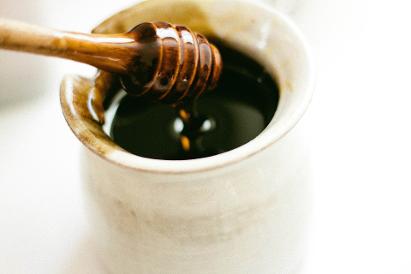
Honey has been a common ingredient in home remedies for cough and commercial cold medicines for years. In fact, in a 2010 study showed that honey scored better than two common cold remedies, dextromethorphan and diphenhydramine, in relieving nighttime coughing in both children and adults. It’s also becoming a commonly accepted form of seasonal allergy relief, thanks to some promising discoveries in the field of immunotherapy. Pollen found in local honey is introduced to the allergy sufferer in such a small amount that it may help them build immunity to it over time. Keep in mind, that honey from other regions may not have the desired effect.
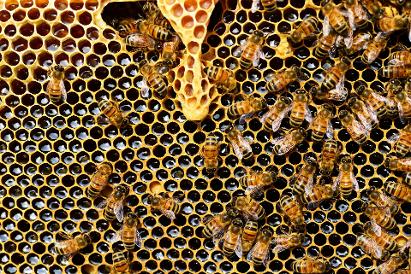
Honey isn’t just good for the insides. Research suggests it has a healing effect on the skin, as well. One such group of studies touts the use of honey as an effective treatment for diabetic ulcers, while another series suggests that it may help heal partial thickness burns and wounds infected after surgery. That’s because researchers believe that honey’s antibacterial and anti-inflammatory properties help protect and nourish skin tissue. That’s also why you might see it in the beauty creams in high end cosmetic shops and in DIY skincare recipes.

One very important thing to keep in mind is that honeybees are hurting. They are dying at an alarming rate and they need a little compassionate human intervention to survive. Get to know your local beekeepers at farmer’s markets in your town and like or friend them on social media. When you see a hive in your neighborhood or somewhere that it’s likely to be sprayed and lost, give them a call so it can be properly captured and cared for. The health benefits of honey could be lost to us forever if we don’t first concern ourselves with the health of the honeybee. Do your part to save them and sweetness will follow.
Beautiful Benefits: Supplements That Turn Back the Clock by Jennifer Render
There are plenty of things we can do while we’re young to keep our skin from aging too quickly. We’re all been told to drink plenty of water and use our sunscreen, but at some point, time catches up with us and begins to show on our face. While we may not be able to stop the aging process entirely, there are some natural options out there to help us keep our youthful glow that won’t break the bank or give you worry lines.

Collagen – When we start losing collagen, we start seeing wrinkles. Your first inclination may be to reach for a collagen cream, and while it will provide skin with essential moisture, the molecules are often too large to truly plump up collagen supplies. This is where supplements and collagen producing foods shine. Bone broth is all the rage for a variety of wonderful health reasons, but did you know that it contains collagen which will help with the effects of aging? You can also look to brightly colored fruits like tomatoes and watermelon, which contain lycopene, to protect collagen stores. Collagen is also available in capsule form at your local health food store.
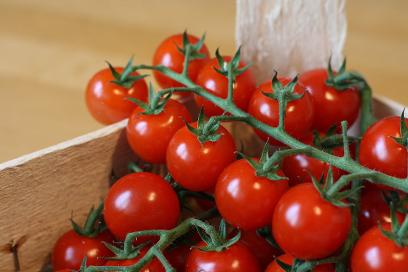
Antioxidants – We are exposed to free radicals 24 hours a day. Even if we never smoked or consumed alcohol and always used our sunscreen, we’d still be subject to stress and pollution and that’s enough to produce evidence on the skin. Scientifically speaking, free radicals are atoms that are missing an electron and in order to recoup their losses, they steal our skin’s electrons. If you want to counter free radical damage, you want to use an antioxidant, which fights free radicals by giving an extra electron to the process, keeping our skin protected. We can introduce antioxidants into our systems internally, by eating a variety of fresh fruits and veggies and drinking green and white teas. You can even make your own antioxidant skincare treatments with ingredients you likely already have on hand.
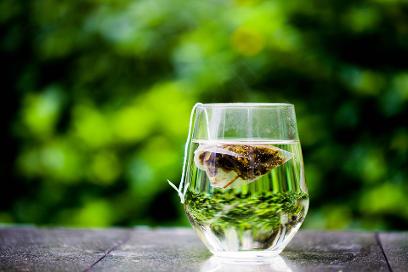
Hyaluronic Acid – Hyaluronic Acid is a gel like molecule that holds water. Our bodies produce it naturally, but that production starts to decline as we age. When we’re in our prime, Hyaluronic Acid fills and protects our eyes, cushions our nerves and joints, and it keeps our skin, hair and nails hydrated, and as we age its loss is something we are likely to notice not just in the way we feel, but as we glance in the mirror. The good news is, Hyaluronic Acid is available in both supplement form and in many skincare products. Because the loss of Hyaluronic Acid is likely evident on both the skin and in other areas of the body, it may be a good idea to double up on its benefits by utilizing a serum or skin cream as well as taking a capsule or liquid form internally.

Time ticks by no matter what we do, but taking steps to nourish, protect, and replenish ourselves now can keep people guessing about exactly how much time has passed. Eating a clean diet, supplementing where needed, and maintaining a good skincare routine may be all that’s necessary to keep Father Time at an arm’s length and leave your worry lines in the past. Beautiful skin is here to stay!

Keeping Your Nose Clean: The Neti Pot
by Jennifer Render

It’s February, and love is in the air. Since Valentine’s Day falls in the middle of cold and flu season, there’s the potential for some germs to be in the air, as well. Getting a good night’s sleep, eating a clean and healthy diet, and getting plenty of exercise are all good ways to give your immune system a fighting chance, but there’s another way to help your chances of being struck by Cupid’s bow rather than a nasty virus or infection, and it starts with your nose.
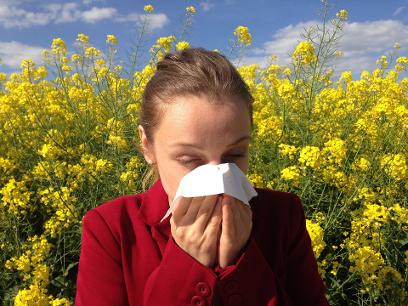
We take in approximately 11,000 liters of air in a day, with our nose acting as a primary filter for most of whatever happens to be traveling with that air. When things are working normally in the nose, your cilia keep mucus moving along in your nasal passages, bringing it to your nose to be blown out or to the back of the throat. When things become congested in there or the membranes inflame due to allergens these hair-like cilia can benefit from a good rinsing to thin mucus and get rid of the irritants that are clogging up the works. That’s where the neti pot comes in.
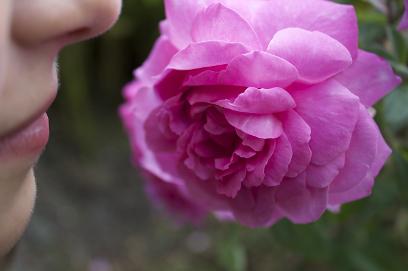
The neti pot has been used in Aryuvedic therapy for centuries, but is just now getting it’s due in the west as allergy and sinus suffers are discovering its ability to ease congestion and clear pollen and other debris from nasal passages. They come in a variety of materials from plastic to copper, and in the traditional teapot-style or more modern squeeze-bottle designs. No matter what type you use though, the end result is the same: to irrigate the sinuses by flushing out mucus and any particles inside the nose that may contribute to illness or inflammation. By inserting the tip of the neti pot inside the nostril and directing a warm, salt water solution through to the other side on a regular basis, health experts suggest that you can prevent or shorten the duration of colds, reduce snoring, ease sinus headaches, improve taste and smell and more.
Neti pots can be found in pharmacies and health food stores, and are typically inexpensive when compared to nasal sprays and medications. Prepackaged saline packets can be purchased, or can be made at home with minimal cost and supplies. Keeping your neti pot clean and sterile is recommended, especially if it is being used to clear congestion due to illness or to clear seasonal irritants. Nasal irrigation can be performed as frequently as needed, and some experts suggest doing it as often as you brush your teeth. There are some circumstances and pre-existing conditions that can be affected by use of a neti pot though, so always talk to your doctor before starting any new alternative therapies to make sure they will enhance your health and not hurt it. Once you get the okay, take some extra time to stop and smell the roses. They ought to be especially lovely, now that you can breathe.
Strengthen Your Resolve: How to Keep Your New Year's Resolutions
by Jennifer Render
It’s January, which means nearly half of us have made resolutions for 2017. The good news is that many of us have plans to maximize our health in the New Year. The not-so-good news is that only around 8% of people see their resolutions through. The great news is that there are a few practical tips that will help you to make sure you end the year on the successful side of your resolution.


Make a Plan– According to the journal Behavioral Science and Policy, when we really want something, we often sabotage ourselves right out of the gate by failing to make a plan. We may say we want to lose weight this year, but being clear and writing down the specific steps is what makes that goal more tangible. Wanting it is wonderful, but having a detailed map for getting there is even better.
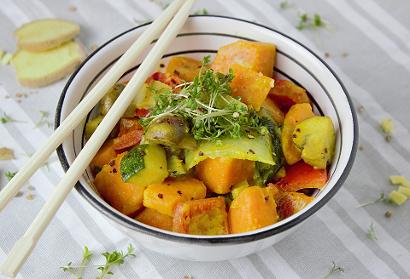
Start Small – When we have a big goal we want to achieve, like overhauling our diet, experts suggest you start small. Rather than overwhelm yourself and your taste buds all at once, consider swapping your soda for water the first week, and replacing your usual Saturday night fast food order with a homemade turkey burger and baked sweet potato wedges the next. The goal is to create something you can sustain long-term, and when too many changes occur at one time, it can be difficult to manage. Breaking your massive goal into smaller steps also gives you more opportunities to celebrate your progress, and carrying a win into the next week can help keep that winning streak going.

If You Fall Off the Horse, Get Back On – One of the most common reasons people “fail” at keeping their resolutions is that they think there’s no coming back from an upset. You cancelled your workouts to nurse a cold or an injury, but you’re better now and you’re still not going. You bought that box of cookies to help your friend’s daughter, and next thing you know you’re staring at an empty sleeve, so you go ahead and finish the other one, too. Your self-care routine was waylaid by a stressful month at the office and you’re wondering if maybe the new-you isn’t happening in the New Year. Life’s little ups and downs are inevitable, but recognizing that you have a chance to change your behavior the following day, or even the very next minute, is the key to sticking with the goals that you’ve set. Jon Sinclair once said “Failure is a bruise, not a tattoo.” Recognizing that it’s temporary can make it easier to get back in the game.
Making a resolution is easy, but keeping it doesn’t have to be hard. If these tips don’t get you to the finish line, there are leading experts out there who can speak to exactly what’s tripping you up and they are only as far away as your internet connection. Happy New Year and happy new you!
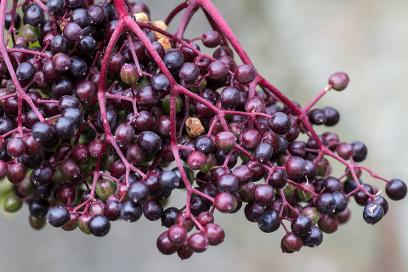
Winter Wellness
with Elderberry
by Jennifer Render
We’re in the thick of the holidays, and while lots of us are thinking about cranberries, there’s another berry you may want to consider as you scramble for those last minute gifts for loved ones: the elderberry. Also known as sambucus, the elderberry is a berry with immune boosting benefits that could come in handy as the stress of the season starts setting in. Elderberry’s benefits extend beyond the common cold and flu, though. In fact, once you discover all of its amazing uses, you may find yourself wanting to keep this wonderful fruit around all year long.
Nutritionally speaking, the elderberry is pretty impressive. Loaded with vitamins A though C and minerals like potassium and iron, it’s a supplement that adds plenty of value. It’s also full of dietary fiber and protein, making it a great addition to your existing lineup. If that weren’t enough, it’s higher in antioxidants than the blueberry. Not bad for an uncommon fruit!
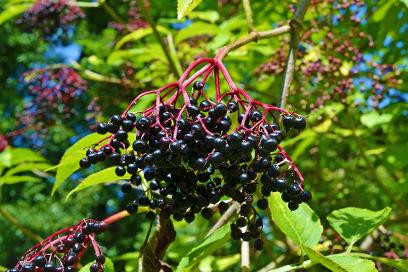
While multiple studies point to elderberry as helpful in fighting viruses such as influenza, according to WebMD, the small purple berry may also be of assistance with certain inflammatory ailments, such as sciatica and joint pain. The University of Maryland Medical Center suggests that elderberry may be useful in the treatment bacterial sinusitis, as well. It’s even been shown to improve gastrointestinal problems like gas and constipation and could be helpful in fighting heart disease.
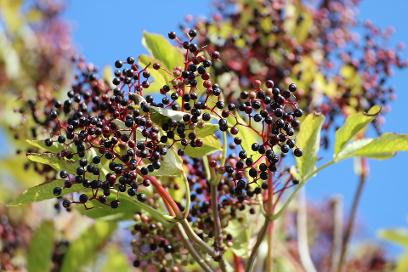
If you’re ready to reach for the elderberry, you have some options to consider. Aside from supplements in the form of syrups, tinctures, and capsules, you can also consume elderberries in jams and jellies, and even in wine. Don’t just pluck them off the bush, though. Consumed raw, the elderberry can be toxic, as it contains trace elements of cyanide that cook off when heated. For that reason, it’s best to stick to ready-made varieties. Finally, check with your doctor if you are pregnant, if you have any pre-existing health issues, or are taking any medications or supplements to make sure there won’t be any reactions that could cause harm to your health. Improvement is the name of the game, so be safe with your supplements and enjoy the fruits of this holiday season!
Tea Time: Tasty Ways to Improve Your Health by Jennifer Render
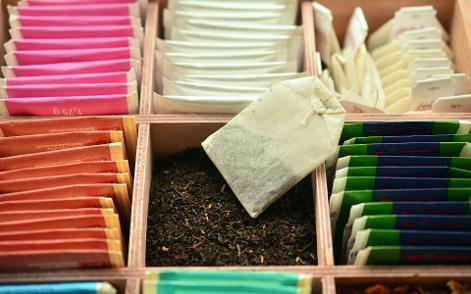
There’s a chill in the air, which can sometimes bring with it a cold, flu or infection. There’s plenty of preventative measures we can take to keep healthy, but one of the easiest ways we can give ourselves a fighting chance is by drinking a cup or two of tea each day. There are about as many benefits from consuming tea as there are varieties to choose from, but once you know some basics about this beverage favorite, it’s easy to add it to your daily routine and target it for better health.
Black Tea – Easily the most common type of tea, black teas have been consumed for more than 500 years. They are known for their high concentration of antioxidants which may lower cholesterol ,and studies have shown that drinking multiple cups of black tea each day may lower the risk of stroke by more than 20% and may also help keep dementia at bay. They are naturally caffeinated though, so if caffeine is an issue for you, look for decaffeinated varieties.
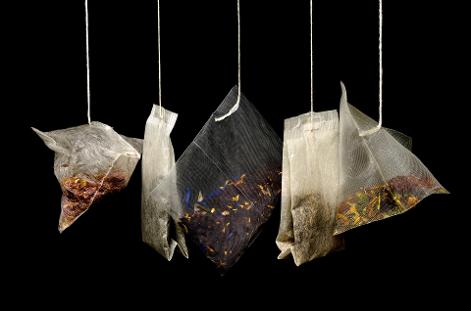
Green Tea – Another antioxidant powerhouse, green tea is another widely popular tea that’s great for keeping your health up. In fact, the majorly potent EECGs in green teas have shown promise in preventing heart disease and certain types of cancer. It has a lighter and more delicate flavor than black tea, but does still contain natural caffeine. Don’t worry if you’re sensitive to it. There are decaffeinated green teas, as well.
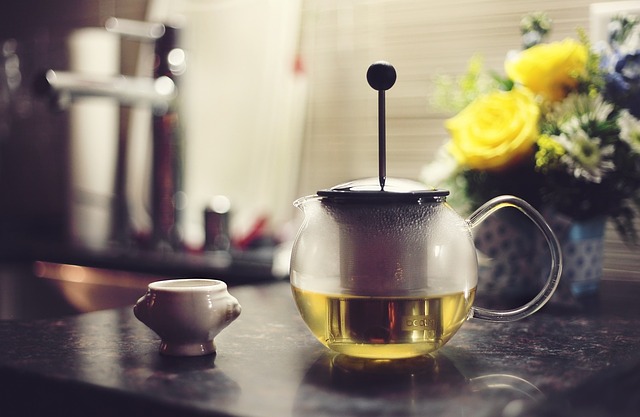
Red Tea – Red tea, also known as Rooibos, is uniquely high in minerals. It’s been lauded for its ability to improve skin, circulation and aid in digestion. It’s great tea to choose to improve immunity, and it’s caffeine free, so it’s a great choice for bedtime or if you have caffeine sensitivities.
Herbal Tea – Herbal teas come in so many varieties, you can find one for almost anything that ails you. There’s elderberry for your immune system, peppermint and ginger for stomach concerns, chamomile to calm you and lemon balm to lift your spirits, and that’s just to name a few. Herbal teas are typically free of caffeine, but some are best not to consume at night, as they can still keep you up past your bedtime.
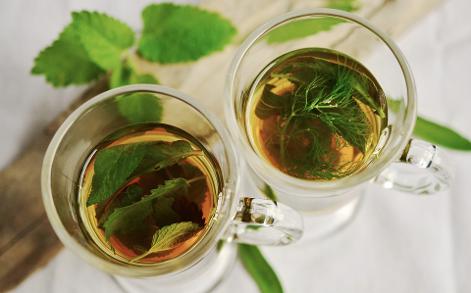
As you can see, teas are a simple way to boost your health and longevity. While most will only improve your health, talk to your doctor about using teas and steeped herbs if you are taking medicines and other supplements, as it’s possible they may not play well together. Once you have the go ahead, fill the kettle and warm up with a delicious mug of whatever your heart desires. It’s always a good time for tea!
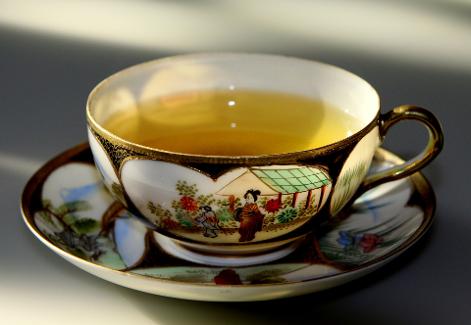
Thyroid Support You Can Feel Thankful For
by Jennifer Render
The thyroid is one of the most important and hardworking glands in the body. Located in the front of the neck, it releases hormones that control the quality of sleep we get, regulates our metabolism, manages our energy stores and helps us control our weight. When imbalances in this butterfly-shaped gland occur, it can have a major effect on our health, but there are certain things we can do to make sure our thyroid gets the support it needs to function properly.
Nourishing Your Thyroid: Perhaps one of the best ways to nourish the thyroid is with iodine rich foods such as wakame, nori, and other seaweeds. Eating these foods helps to produce a hormone called thyroxine which helps keep the metabolism in good working order. Another important support for the thyroid is the mineral selenium which keeps hormone levels balanced. You can find selenium in things like onion and garlic, in brazil nuts and sunflower seeds, and in seafood and fish, such as oysters and tuna. Essential fatty acids, or EFAs, offer fantastic support to struggling thyroids. Find them in fish and eggs, chia and pumpkin seeds, and avocados. Also look for foods high in iron. Hemp seeds, most variety of nuts, tomatoes, and green foods like spinach and spirulina are great sources of iron and are readily available in most health food stores and traditional grocery stores.
Things to Avoid: There are some things to be cautious of when it comes to the thyroid, however. Soy foods, belonging to a class referred to as goitrogens, have been known to slow thyroid function. This is especially important to know if you suffer from hypothyroidism, a condition characterized by an already slow functioning thyroid gland. Brassica and cruciferous vegetables may also cause trouble for the thyroid in large amounts. This doesn't mean you should stop eating your veggies, though. Keep the consumption of foods like broccoli, carrots, brussels sprouts, and kale to a few times a week to keep them from interfering with your thyroid. It may also be helpful to limit things like coffee and other high caffeine foods and beverages. They raise cortisol levels and can interfere with medications and supplements for thyroid care. It's recommended that you keep your coffee consumption to one cup and that you maintain an hour window between your drink and your supplements and medicines to avoid a reduction in absorption. Finally, recent studies suggest that wheat products containing gluten may spell trouble for the thyroid. Gliadin, a protein found in gluten, is nearly identical to a protein our immune system sees as an intruder. To further complicate things this protein looks an awful lot like our thyroid gland and due to this confusion, the body often responds by attacking thyroid gland instead of the gliadin. Replacing wheat with grains such as buckwheat, quinoa, rice, and amaranth takes this protein out of the equation.
Additional Steps: There are also things you can do to support the thyroid that don't involve food or supplements. Simple stress reduction has shown a lot of promise in not just a properly functioning thyroid, but for all systems of the body. Meditation, deep breathing, and mantras and affirmations can go a long way toward alleviating stress. Basic self-care activities like getting plenty of good quality sleep and a gentle exercise such as yoga, tai chi and walking in nature are stress relieving and keep cortisol levels balanced. If you already struggle with your thyroid and stress feels unavoidable in your life, it may be a good time to take a look at day-to-day activities, relationships, and even your career to see where changes can be made for your overall health and happiness. It's also smart to visit with your doctor if you have concerns about possible thyroid issues when supplementation, diet, and stress reduction aren't having the desired effect. There are natural options available to you in prescription form that may offer exactly the help you need.
(Autumn Bloom.jpg)
Even when under a doctor’s care, there’s still much we can do to ensure the success of their protocol. Knowing what to eat, what foods to avoid and how to keep stress to a minimum goes a long way toward keeping this vital gland in tip top shape. And isn’t that something to feel truly thankful for?

Spice Up Your Life
Common Kitchen Staples to Help You Be Healthier

With autumn just around the corner, there are so many great cool weather foods to look forward to. This often means getting to use warming spices that add flavor and depth to our dishes. These spices aren’t just tasty; they may be beneficial to our health, too. Here are three worthy of experimenting with the next time you feel like being creative in the kitchen.
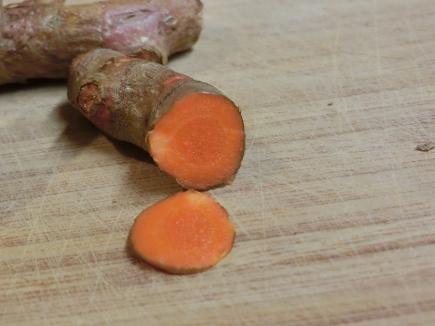
Turmeric – You know that elated feeling you get after a good meal at an Indian restaurant? There’s a pretty cool reason for it, and it’s caused by turmeric. Common in curry recipes, turmeric is rich in curcumin, which has been shown to be helpful for depression. It’s also a powerful anti-inflammatory, making it excellent for joint pain and arthritis. It’s also helpful for reducing redness and acne when used topically. It’s bright yellow color can cling to fabrics and surfaces though, so make sure you’re not wearing or washing with anything that you can’t bleach. If eating it or applying it to the skin isn’t for you, turmeric is a great addition to fresh juices, and it blends well with other fruits and vegetables so you can mask the flavor, but still reap the benefits.
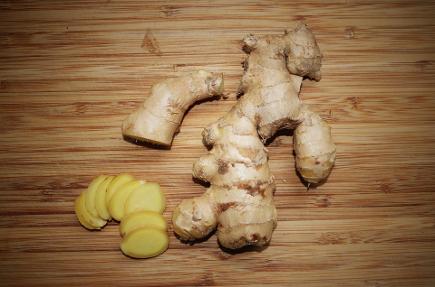
Ginger – There’s a reason we drink ginger ale when we have the flu. It’s because ginger is a gem for fighting nausea. It does this by causing the muscles in the GI tract to relax. Not feeling queasy? Ginger, like turmeric, is a powerful anti-inflammatory. Take it for pain and muscle aches and feel letter in no time. Ginger is great when brewed like tea. Add slices of lemon for a warming drink to calm indigestion soothe long inflammation or ease menstrual cramps.
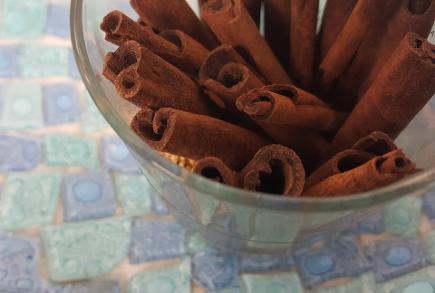
Cinnamon – This sweet spice isn’t just a common addition to sweet treats, it packs an antioxidant punch, too. That’s because it’s loaded with polyphenols, which makes it better than garlic and oregano for fighting free radicals. It also may help with weight loss and insulin sensitivity. Studies show that helping to regulate spikes in blood sugar; cinnamon could keep some sugars from being stored as fat. Sprinkle it on sweet potatoes, oatmeal or add it to warm beverages for a boost. Just make sure you’re looking for Ceylon cinnamon, or true cinnamon, for the best benefit.
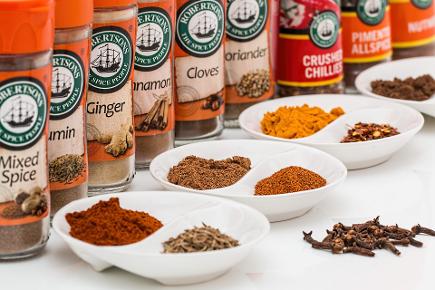
With anything, it makes good sense to practice precautions when changing your diet. Adding too much of anything to a dish is a surefire way to ruin it, and the same holds true when using spices as supplements. Less is almost always more. It’s also smart to talk to your doctor about possible interaction with anything you may already be taking. Once you’re in the clear, open your kitchen cabinets and get creative. Variety is the spice of life, after all!

Mosquitoes Bite . . .
Repel Pests and Calm Skin Naturally

There’s so much to enjoy about summer: The longer days, dinners out on the patio, and drinks with those little umbrellas. There’s also at least one thing that really bites: Mosquitoes! Whether you’re outside tending to your garden, taking a dip in the pool, or headed for the hills for a day of hiking, you’re going to encounter these pesky pests. The good news is there are natural solutions for soothing bites and for stopping them before they start.
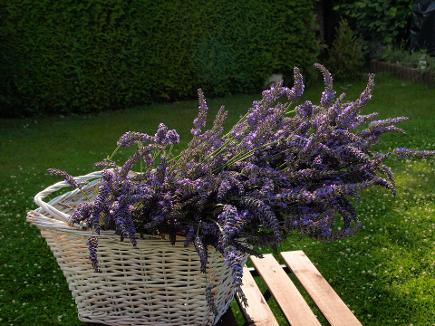
An Ounce of Prevention: One of the first things you can do to prevent mosquitoes from ruining your summer fun is to plant herbs, flowers and other plants around your home that repel them. Things like lavender, lemon balm, marigolds and peppermint will keep bugs away and make beautiful additions to summer dishes, as they are all edible. You can also plant catnip, though you’ll likely make friends with all the neighborhood cats, if you do. If your thumbs aren’t green, you can use essential oils to create a simple bug spray that will keep you from feeling the sting. You’re not stuck with smelly old citronella, either! Lemon and eucalyptus make great additions to a homemade pest spray due to the naturally found ingredient called cineol. Try mixing 4 drops each of lemon, eucalyptus, lavender and peppermint essential oils, a ¼ teaspoon of vegetable glycerine, and clean, filtered water to the top of a 4 oz spray top bottle. Shake and spray directly on the skin for a great smelling way to keep bugs at bay. Another option for saving your skin is neem oil.
continued . . . . . . .
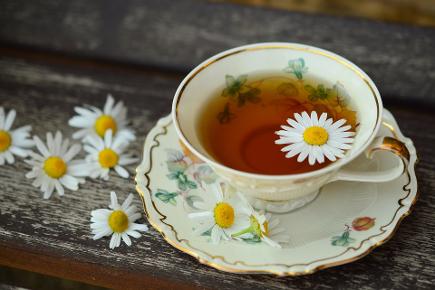
After the Fact: It’s great to prevent pests from feasting on exposed summer skin, but what happens when it’s already too late? The itchy, relentless red welts can be unsightly and very irritating. Calendula and aloe vera are very helpful items to have in your summer medicine cabinet because they’re dual-purpose performers. Not only are they great at soothing stinging insect bites, but they’ll cool sunburns as well. Don’t toss your used chamomile teabag in the trash! Once they cool, they make great compresses for itchy skin that needs calming. Tea tree and lavender essential oils are wonderful for bites that are bugging you. In most cases, they can be applied neat to the skin, but when you have kiddos and elders in your care, it’s best to dilute in a carrier oil or lotion. Consult a certified aromatherapist in your area for dilution ratios that will keep everyone safe. When you’re really in a pinch, search your kitchen for raw, organic honey. It’s antiseptic and antibacterial. Just stay inside when you use it, or you’ll also have ants and flies to worry about!

There’s no reason to shut yourself inside this summer to keep the bugs from biting. With these skin saving and soothing tips, mosquitoes don’t have to make you miserable. Goodbye, bugs. Hello, Summer!
Sun Protection Foods : Nature’s SPF

There’s something about Summer that brings people outdoors. Whether it’s block parties, barbeques, or taking the kids on a family vacation, we sure do like to gather A under the sun. While Vitamin D is an important building block to health, too much exposure to the sun has consequences that can harm us. We’ve all been told time and time again to wear our sunscreen when prolonged exposure is unavoidable, but there are some additional ways to ward off UVA and UVB rays, and guess what? You get to eat them!

Vegetables – Your mother was right. You need to eat your broccoli! That’s because it contains sulphoraphane, a powerful antioxidant with anti-cancerous effects that helps the cells in your body protect themselves against UV damage. Leafy greens are a good idea, too. They have been shown to reduce the risk of skin cancer by as much as 50%. In the mood for some fresh garden salsa? Bell peppers and tomatoes are both great sources of lycopene, which has been shown to have an SPF of anywhere from 1-3. Sweet potatoes and carrots offer beta carotene and Vitamin C, which help protect the skin against free radical damage with their high antioxidant content. Slice both into long matchsticks, drizzle with olive oil and herbs and bake for a healthy substitute for fries with your grilled goodies.
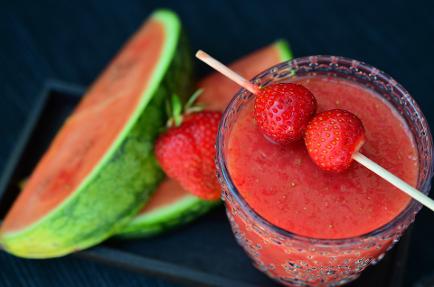
continued . . . .
Fruits – Watermelon is a warm weather staple, and it’s not just a delicious way to stay hydrated! Its lycopene content is almost 40% higher than that of tomatoes. Other fruits with high levels of lycopene include papaya, guava and grapefruit. Pomegranates are an excellent source of polyphenols like catechins, which strengthen the top layers of skin and allow them to resist UV rays. Vitamin C is found in all varieties of citrus fruit , but can be found in berries and kiwi to fend off nasty free radicals, as well. Blend these beauties into a smoothie or use them to make a fabulous and functional fruit salad.
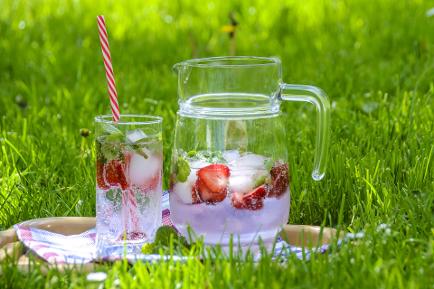
Beverages – If you’re going to be out in the sun, it’s just smart to drink water to avoid dehydration, but water also helps keep skin’s Natural Moisture Factor (NMF) high. This isn’t just a fancy name, either. It helps skin protect itself from environmental factors that cause damage, like the sun. While you may not be in a hurry to put the kettle on as temperatures creep into the triple digits, taking your green or black teas iced will provide plenty of polyphenols to help skin fend off the sun’s rays. If the idea of drinking plain tea or water doesn’t excite you, slice any of the fruits above and add them to your glass for color and flavor. Infusing your teas and waters is a tasty trend that’s sun smart, too.

Sunscreen is still the gold standard in sun protection and you definitely shouldn’t leave home without it, but isn’t it nice to know that salsa and smoothies can save your hide, too? Be the perfect party guest by offering to make a delicious, double-duty side dish. Now that you’ve done your dietary due-diligence, rest easy and enjoy those lazy days of Summer!
See Ya, Sneezes!
Springtime Allergy Relief

April showers bring May flowers, but Spring allergies often hitch a ride, too. If your eyes are watering, your nose is running and you’re generally sneezy and miserable, there are some natural solutions to this common problem. Your wallets can breathe a sigh of relief, as well. You likely already have most of these items at home.
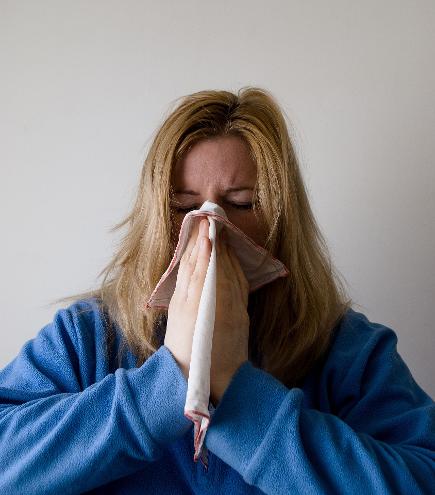
Quercetin
While Quercetin is a relatively new kid on the block when it comes to allergy relief, recent test tube studies have shown that it prevents immune cells from releasing histamines. Histamines are those nasty chemicals that cause allergic reactions like runny nose, watery eyes, hives and swelling in the face. It’s available in supplement form, usually in capsules, but Quercetin is present in many of the foods we eat every day. Eat your Quercetin by adding onion to your recipes, eating berries, plums and apples, and by experimenting with capers. Capers are the brined flower buds of the capparis spinosa plant and can be used in seafood, poultry and pasta dishes for added flavor. While they are high in Quercetin, capers do tend to be high in sodium. If salt intake is a concern for you, best to stick to the onions or fruit.
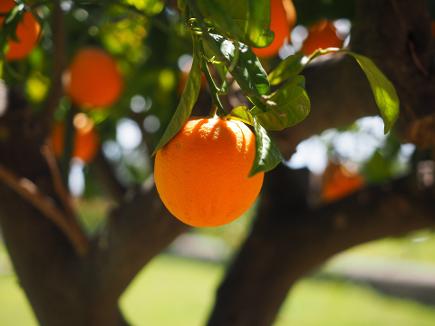
Vitamin C
Another antihistamine you probably have lying around in spades is good old Vitamin C. It works by destroying the histamine’s molecular structure, which reduces the amount present in the blood. The supplement form is easy to find, and can be purchased in capsule form, powders or in chewable tablets. If you can find a variety with bioflavonoids, especially rosehips, research shows that this man improve it’s ability to fight allergy symptoms. If you prefer to get your Vitamin C in your diet, oranges are a viable option, but you’re not limited to them. You can also get high doses of Vitamin C in greens like kale, chard and spinach, fruits like guava and mango and in bell peppers of all colors. A word of warning, you’ll know immediately when you’ve had too much Vitamin C, because it will send you running to the restroom. If you’re going to up your regular dose, go in small increments so you don’t have any unexpected emergencies on your hands.

Neti Pots & Nasal Lavage
Nasal lavage, or saltwater cleansing with a neti pot or specially created squeeze bolttle can work wonders for allergies. We take in approximately 500 liters of air in a day, and our nose serves as the only filter for it. That means the nasal mucosa, the liming of our nose, is exposed to pollens, molds, dust, pet dander and any other variety of irritant that is the reason for our sneezin’. Flushing out this filter regularly, especially when we’ve been outside for an extended period of time, can keep these substances from coming in contact with our immune system. Neti port and nasal lavage bottles can be picked up at local health food stores or online for around $10 and you can also pick up premade saline mixes to make the process simple. You can also make your own solutions with salt and baking soda. Just make sure to follow the directions and stick with it. It might seem frightening or strange at first, but you’ll get the hang of it. Use this simple tip for keeping the solution from trickling down the throat: Keep your tongue pressed against the roof of the mouth, Nasal washing should be considered safe, but talk to your doctor if you have any concerns.
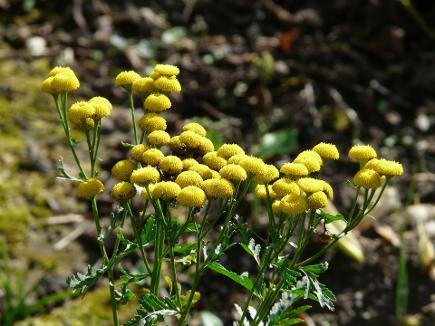
You don’t have to cry over your itchy, watery eyes any longer. A simple trip to your local supermarket store or a short walk to your kitchen can have you ditching that hay fever and skipping through the daisies, before you know it. Spring has sprung. Get outside and enjoy it!
Giving the Green Light to Greens

In an ideal world, we’d all eat a sparkling clean and totally balanced diet at all times. We’d grow our own foods and make delicious home cooked meals from scratch, with nothing but the best and most wholesome ingredients. With the busy lives we lead though, it can be hard to meet all of our nutritional needs and truly fuel our bodies the way they deserve to be fueled. This is why most of us take supplements. As far as what supplements to take, health experts recommend a good multivitamin, a quality Omega supplement and a healthy dose of green foods. Of course we take a multivitamin to fill in those gaps in our diet, an Omega to support our hearts and brains, but have you ever stopped to ask yourself why we need those leafy greens? Chlorophyll! Flashbacks to high school Biology aside, this stuff benefits us in miraculous ways. Here’s how it works its magic and some easy ways to make sure you’re getting enough:
What is Chlorophyll and Why is it so Good For Us?
In order to understand what Chlorophyll does for our bodies, it helps to make sure you have a good working definition of what it is. Chlorophyll is the pigment present in the leaves and stems of plants and grasses that gives them their green color. Chemically speaking, it’s strikingly similar to hemoglobin, the main difference being that hemoglobin has Iron as its central atom and chlorophyll’s central atom is Magnesium. Here’s a quick refresher on hemoglobin: It transports oxygen from our lungs to other parts of our body. Amazing, right?! This very connection is why chlorophyll is such an absolute rockstar for cleaning the blood. Aside from this, it’s also touted for promoting healthier bowels, neutralizing bad breath and body odor, and stimulating the immune system. Sound like something you need more of? Read on to find out how to incorporate more into your diet.
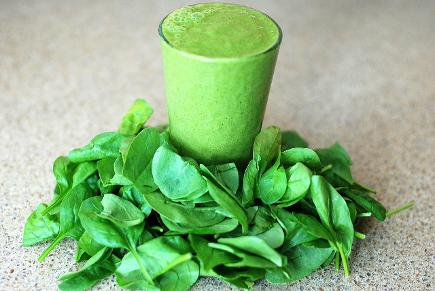
Green Foods
Strictly speaking, all green veggies contain some chlorophyll, but there are some sources that are higher than others. Look for whole leaf spinach and kale and make one of your meals a big salad. Add fresh parsley and cilantro to your meals. If you’re feeling adventurous, try juicing wheatgrass. If you struggle with the taste of greens, tossing a handful in the blender with your fruit smoothie will make it more palatable. While getting them in their raw form is best, there are tons of great recipes online for tricking your tastebuds into putting more greens on your plate. Bon Apetit!
Supplements
If you can’t stand the idea of all those veggies or you’re pressed for time, supplements can be the answer for getting a mega dose of the green stuff. Companies have done the hard work for you and created wheatgrass, barley grass and greens powders that come in all kinds of flavors. They can be added to juices or blended into delicious drinks to make them hardly noticeable. You can also look for an array of algae as a great source of chlorophyll. Look for similar sounding Chlorella in tablet or capsule form. Of course, if you’re super pressed for time and you want to pull out the big guns, you can buy chlorophyll on its own in liquid or capsule form. The liquid versions even come in flavors. Try a dropper full of mint flavored chlorophyll in sparkling water for a refreshing, healthy take on soda. Just remember when taking supplements, it’s best to follow the directions on the label as to proper dosages and even better to talk to your doctor before adding anything to your existing regimen, if you can. While it’s unlikely that green foods will do anything other than improve your health, it’s smart to make sure you’re not taking too much or taking anything else that could cause a negative reaction.
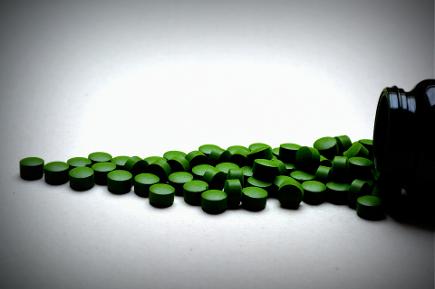
Science lessons considered, it makes good sense to get more greens. With all of the options available for you, it’s easy to find one that fits your lifestyle and taste preferences. With all of the benefits you’ll gain from this change to your diet, you’ll be sure to make everyone around you green with envy!
Heart to Heart
Foods for Cardiovascular Health

It’s February and with Valentine’s Day just around the corner, you’re probably seeing hearts everywhere you look. While it’s absolutely lovely to celebrate love, it’s also a great time to support your own heart by taking actions to boost your cardiovascular health. Regular exercise, supplements like CoQ10, and taking important steps like cutting back on alcohol and quitting smoking will certainly go a long way towards reducing the risk of heart disease, but keeping your ticker in tip-top shape can be as easy as modifying your grocery list. These simple tips won’t cause palpitations when you see the price tag, either. Let’s go shopping!
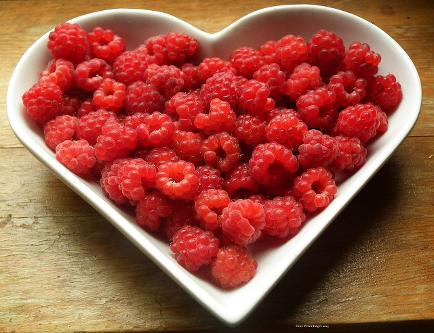
Fruits – The pectin fiber in apples have been shown to lower cholesterol. If you’re more of a citrus fan, grapefruits have pectin, too. Bananas, high in potassium, are great for lowering blood pressure. If bananas aren’t your fave, but you still want the potassium, cantaloupe is another great source. Berries and grapes are packed full of flavanoids, which can protect against inflammation which may lead to heart disease. Struggling to get fruits in your diet? Blend them into a delicious smoothie and sip them all at once for a quick snack or breakfast on-the-go.
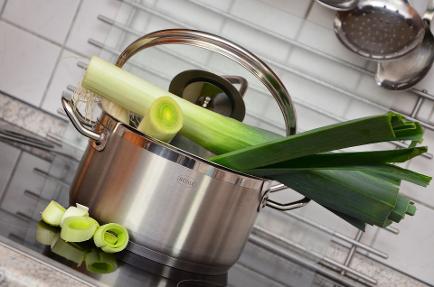
Veggies – Asparagus is full of fiber, but it’s also an excellent source of saponins, a compound that may reduce cholesterol. Carrots are more than just good for your eyes. The cartenoids in carrots have been known to reduce the risk of cardiovascular disease in those who ate at least one serving a day. The cruciferous vegetables, like cabbage, broccoli and cauliflower, are packed with lutein. Lutein is an antioxidant which can slow the build-up of plaque in the arteries. Don’t be afraid to add onions, leeks or garlic to your meals, either. They can help lower blood lipid levels and blood pressure. Just don’t forget to pack a mint if you’re going to be kissing your Sweetie afterwards!
continued . . . .
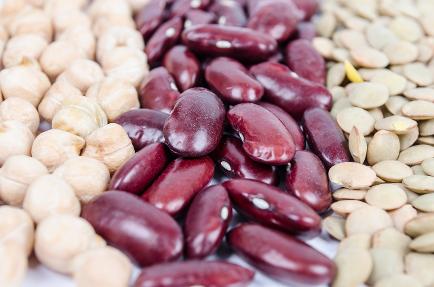
continued . . .
Protein – Cold water fish are one of the best things to eat for heart health. Tuna and salmon are loaded with Omega 3s, which have been shown in multiple studies to benefit both the prevention and reduction of heart disease. Vegan or Vegetarian? Walnuts are a great source of Omega 3s, so don’t worry! You’ll get those benefits, too. Want something a little more meal-worthy? Lentils and beans are packed with fiber, making them cholesterol-lowering powerhouses. Don’t forget to soak them for at least 12 hours before you cook them. You’ll reduce the sugars and starches that can cause gas and affect date night with your Darling.
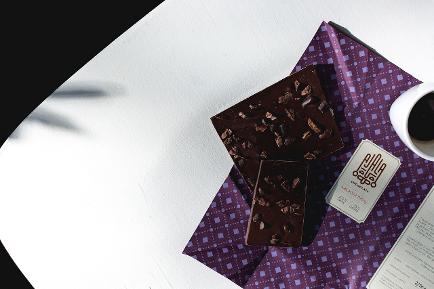
Extra Sources – Good fats, like avocados and olive oil, are heart healthy and add an indulgent richness to healthy meals. Green tea is an antioxidant heavy beverage that can ward off clogged arteries. Last but certainly not least, there’s dark chocolate! Dark chocolate, also loaded with antioxidants, may lower blood pressure and is the perfect gift to share with your Sugar.
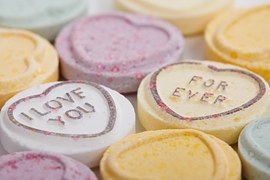
If you’re at risk for cardiovascular disease, take heart! You can take charge of your health without going broke, by filling your cart with delicious, healthy foods. You can even skip the restaurant reservation this Valentine’s Day and cook up something wonderful in your very own kitchen with someone you love. Change your diet and change your heart! Here’s to a lovely February.

Loving Your Liver
How to Help it Bounce Back After Overindulging

With all of the spiked eggnog, mulled wine, and champagne toasts at parties this past holiday season, it’s hard not to have overindulged at least a little. When we do, one of the organs that works overtime to compensate is our liver. Sitting in upper right portion of our abdomens, just above the stomach, our livers perform the vital function of filtering everything we consume and inhale . When we tax it with excess alcohol and overly fatty foods, the 3 lb organ can really benefit from a little TLC.
How can we help a liver out? Eating a clean diet, drinking plenty of fresh water, and utilizing support herbs and supplements can be just the ticket to fixing our filter. Many of these helpful practices can be performed with little to no added expense, making them especially valuable, but not necessarily costly.
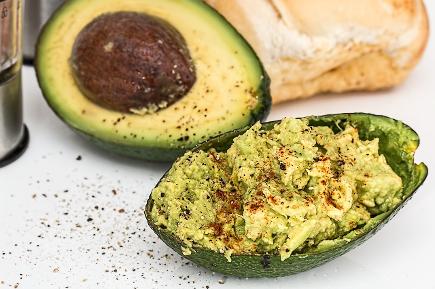
One of the best things you can do to help your live function better is to eat well. Garlic is a great addition to nearly all savory meals, and with high levels of allicin, it aids in the cleansing of the liver, too. Want an excuse to add some guac to your burrito bowl? Avocados are rich in glutathione, which assists the liver in filtering harmful toxins. Get in some leafy greens, as well. Adding an extra leaf of romaine to your sandwich or using collards for your wrap can give you a good dose of chlorophyll, which will help purify the blood of heavy metals and pesticides, which also burden the liver.
continued . . . . .

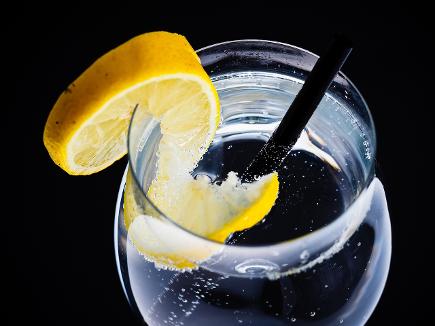
Staying hydrated is one of the best ways we can maintain health in all areas of our body, but drinking plenty of water helps the liver specifically by keeping the liquid content of the blood high. When we don’t drink enough of it, it can change the viscosity, which makes it harder to filter and makes the detoxification process more difficult. If drinking plain water isn’t your cup of tea, try actual tea. Green tea, known for its antioxidant content, is especially rich in catechins. These highly potent flavanoids are known to improve liver function. Not a tea-toataler? Adding lemons to your water not only adds Vitamin C, but it also aids in cleansing the liver, as well.
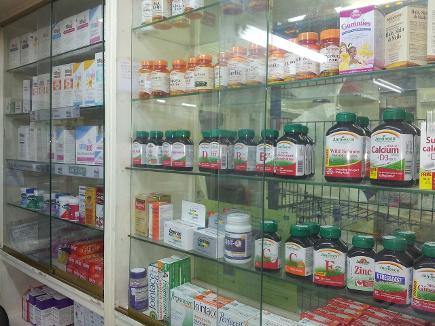
If you’ve been taxing your liver for a long while, reaching for some support herbs and supplements could be helpful for starting out the year with a clean bill of health. Many supplement stores carry liver cleanses that take all of the guess-work out of the detoxification process. They can be pricy however, so if a kit isn’t in the cards, look for singular herbs like milk thistle and dandelion root to assist with liver congestion. You can also look for the amino acid N-acetylcysteine, or NAC. NAC also increases glutathione synthesis, so if the avocados don’t do it for you, this is a more than suitable substitute. As always, it’s wise to consult with your physician before introducing any supplements into your daily regimen. Making sure there aren’t any interactions with anything you may already be taking, and that you’re healthy enough for supplements in the first place, will do more than just help your liver. It could just keep your alive.
When our diets include healthy foods, we get enough water to stay hydrated and flush out toxins, and we know what supplements to reach for when we’ve had a bit too much fun, it’s not hard to get our livers back in tip top shape. With the over 500 vital functions it performs to keep us going, giving it a little love now and again means it gets to love us back a little longer, too. Next time you raise a glass, do it to good health.

Seasonal Affective Disorder :
Your Guide to Beating the Winter Blues

The cold weather and shorter days of Winter often bring cozy, toasty nights in front of the fireplace and lots of holidays to celebrate with friends and family. They sometimes also bring something that can make these chilly months a challenge. I’m referring to Seasonal Affective Disorder, or SAD, which is a type of depression common in the cooler months. Typically starting in Autumn, and resolving at the first signs of Spring, SAD is more than just holiday stress and understanding what it looks like and how to treat it can help keep the season bright.

The symptoms of Winter-onset SAD can include exhaustion, irritability, hypersensitivity to criticism and problems getting along with others, oversleeping, a feeling of heaviness in the limbs, changes in appetite that include a craving for carbohydrates, and weight gain accompanied by depression. While it’s common to experience these symptoms once in a while, when they keep you down for multiple days at a time and you find yourself not able to stay motivated to do the things that you normally enjoy, it may be time to seek help. The good news is, there are plenty of natural solutions to this common problem and knowing what to reach for can help you get back to sipping hot cocoa and caroling out in the snow.

Supplements and dietary changes are a great place to start for getting your bounce back. Things like SAMe and St. John’s Wort have shown promise in treating both general depression and SAD. Melatonin and Vitamin D can help with low-mood due to sleep disturbances and less sunlight from the shorter days. Another great option is Omegas. New studies have shown that Omega-3s, which are found in flaxseed, cold water fish, walnuts and eggs may be effective in treating depression, and are great if you don’t have access to high quality supplements or are watching your spending. Many also find relief from their symptoms by seeking acupuncture or aromatherapy, doing yoga or meditation, or through bodywork like massage, Reiki or Craniosacral Therapy. There is also traditional talk therapy and online groups and forums if you need extra support and the advice of professionals and people who have been through what you’re going through. While it can be hard to admit when we are struggling, it’s also a good idea to talk to your friends and family about what you’re going though, so they can check-in and offer a lending hand when needed.

It’s also important to note that while most Seasonal Affective symptoms occur in the Fall and Winter, this type of major depressive episode can actually happen in the Spring and Summer months, as well. Symptoms such as increased anxiety, insomnia, weight loss and poor appetite that accompany depression in warmer months can also be a sign of SAD. Before making any diagnosis on your own, it’s a good idea to talk to your doctor about the symptoms you may be experiencing and let them help you come up with a plan that won’t interfere with any medications or supplements you are already taking. This also allows them to make sure that the symptoms you are experiencing don’t point to anything else that may require a different course of treatment.

No matter what this holiday season holds for you, it is my wish that you and yours be healthy and happy. May the love, light and magic of the season surround you and may you have peace and joy in your life today and always. Happy Holidays!
The Surprising Connection Between Gratitude Journaling and Your Health

With Thanksgiving being just around the corner, it’s not uncommon for people to focus their thoughts on thankfulness. That feeling of warmth and happiness we gain when we gather around a holiday feast and share the things we have been most thankful for is doing more for our health than we realize. Scientific research points to the practice of keeping a gratitude journal as a viable way to maintain health and good feelings year round.

In April of this year, the American Psychological Association published findings which showed that those who practiced gratitude on a regular basis experienced a better overall mood, slept better, suffered from less fatigue and experienced lower levels of inflammation, as it related to cardiac health. Dr. Paul J. Mills of the University of California took 186 men and women in Stage B heart failure and split them into two groups. One group received regular medical care and wrote down things each day that fostered a feeling of thankfulness, while the other group only received regular medical care. The group that utilized a gratitude journal and wrote down three things they were thankful for daily for 8 weeks not only had significant overall improvement in their health and well being, but experienced a marked improvement in the inflammatory response that contributed to their heart disease.*
continued . . . . .

continued . . . .
Two leading researchers in the field of Positive Psychology, Dr. Robert A. Emmons of the University of California and Dr. Michael E. McCullough of the University of Miami, conducted a study in which their participants were split into two groups and asked to journal weekly for 10 weeks. The first group was asked to review their week and write about things that upset them or caused them stress and the other group was asked to write about things that they were grateful for during their weekly review. When the 10 weeks concluded, those who wrote about the things they were thankful for were overall more optimistic and had a better outlook on life. Interestingly, they also exercised more and had fewer visits to the doctor than the group who focused on stress and annoyances.**

Ready to get started cultivating gratitude? You don’t need a doctor to start this healthful and helpful practice. You don’t even need a traditional journal. While many enjoy the tactile experience of handwriting their blessings into a beautiful blank book, others may enjoy keeping an on or offline journal of their thoughts on a computer or tablet. There are even phone apps which allow you to take a moment for gratitude literally anywhere you may be. The tip amongst researchers and writers that stands out the most? No matter which platform you choose for your writing, focus on quality vs. quantity. The more specific you can be about the qualities of the person, place or thing you are thankful for, the better benefit it will have on your overall well being and the more it seems to generate similar feelings of gratitude for other things in your life. Happy thanks-giving!

Fall in Love With Pumpkin Seeds

When you're carving Jack-o-lanterns this month, do yourself a big favor and hold on to the seeds. Pumpkin seeds, or Pepitas as they are also known, are a nutrient powerhouse and have a host of awesome benefits. Below are a few big reasons to get more of this little seed in your diet. 3

Prostate and Postmenopausal Health - Send the kids out trick-or-treating. This snack is tops for adults! Pumpkin seeds are wonderful for both men and women. Because they are high in zinc, research supports the use of pumpkin seeds and pumpkin seed extract to maintain proper prostate health. Pumpkin seed oil contains high levels of naturally occurring phytoestrogens which may help soothe hot flashes in menopausal and postmenopausal women, and in cases of low progesterone or estrogen dominant hormonal imbalances. Eat up!

continued . . .
Sleep - You know the stuff in turkey that makes you sleepy? It's called L-Tryptophan and its in pumpkin seeds, too. This amino acid works because your body turns it into serotonin, then turns that serotonin into melatonin. Melatonin is the hormone that signals to your brain that it's time for sleep. Wanna catch a few more zzz's? Snack on pumpkin seeds a few hours before bed and snuggle up with your favorite book, partner or pet. Sweet dreams!
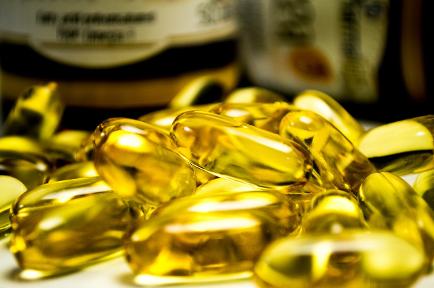
Plant Based Omega-3's - In raw form, pumpkin seeds are a fabulous source of ALA, or alpha-linolenic acid. This type of omega is purported to help with high blood pressure and cholesterol, prevent heart disease and have benefits for the skin.
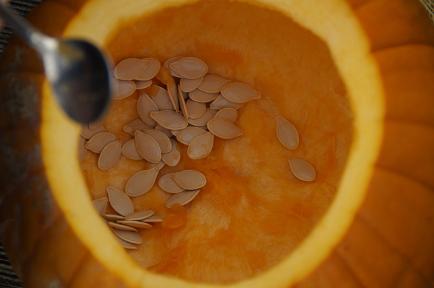
How should you eat them? Raw is best, but lightly roasted is okay, too. Choose a low heat setting, 150-170 degrees for about 15 minutes to keep the nutrients. If the seeds aren't for you, ask your doctor and supplements store about adding pumpkin seeds to your diet in capsule or extract form so you don't miss the benefits! Happy Halloween!


One of the things I love most about new food trends is discovering that they are actually quite old and steeped in rich tradition. This is so the case with Matcha! First traced to China and then brought to Japan, this potent powdered green tea has been consumed for over a thousand years. Originally, it was only served in an elaborate ceremony for royalty and honored Samurai, due to the cost and effort required to produce it. Unlike other green teas, the entire leaf is used in the process. After a special growth process where it's allowed to reach optimum chlorophyll levels, it's pulverized into a fine powder, allowing you to receive up to 10 times the benefit of your normal cup of tea. No wonder they gave this stuff to warriors! So what else can it do? Here are 5 more great reasons to drink it!
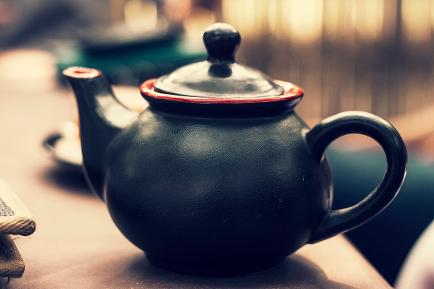
1. It's loaded with antioxidants. You know that stuff that counteracts the damage caused by UV rays, pollution and secondhand smoke? Matcha has it in spades, specifically EGCg, or epigallocatechin gallate. It has a reputation as a cancer fighter, and outranks nearly every other superfood on the ORAC scale by a wide margin.
2. It boosts the heck out of your metabolism, which may help with weight loss.
We've heard for years that green tea is a real-life fat burner, thanks to the
process of thermogenesis. One study in particular showed fat burning potential
increase by 25% when participants drank one serving of matcha before their workouts.
It also increases endurance and energy levels with a hearty dose of L-Theanine,
which will give you a hand up at the gym.
3. It’s brainfood. The L-Theanine in matcha promotes clarity and concentration
in as much as 5 times the amount of traditional green tea. It does this by
increasing production of dopamine and serotonin and stimulating alpha brain
waves. Since stress causes a spike in beta wave activity, an increase in alpha
waves results in a calming effect. Pretty nifty for a beverage!
4. It’s good to your heart. In 2011, the American Journal of Clinical Nutrition
reported significant lowering of LDL cholesterol levels in individuals that
consumed green tea or green tea extracts. Matcha certainly qualifies!
continued . . . . . .

5. It’s your immune system's new BFF. While the catechins have been reported by some to contain antibiotic properties, matcha does also have notable amounts of Vitamins A & C, Potassium, Calcium, Iron, Protein and Fiber, which promote overall health. It's also heavy on the chlorophyll, which alkalizes the body and oxygenates the blood, encouraging it to fight off illness and disease.
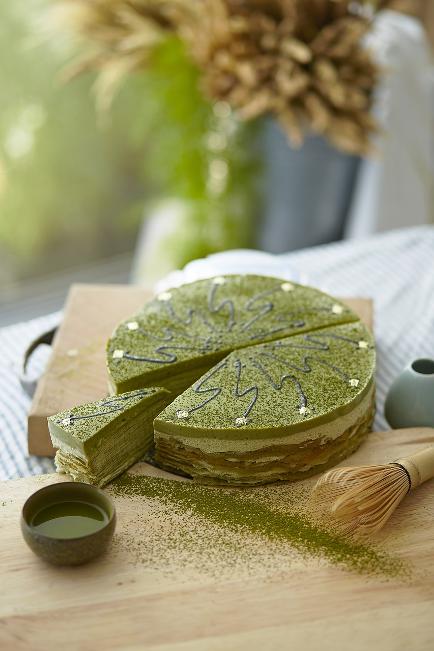
Not sure where to find matcha? Because of its recent popularity it’s easy to find at natural foods stores and specialty tea shops. If drinking it isn’t your cup of tea, matcha can also be used in a variety of homemade recipes and is now being featured in a variety of healthy convenience foods, as well. Any time can be tea time, if you know where to look. Raise a cup to your health!
DIY Summer Spritzes
It's
August and this month is known for two things around these parts, heat and
mosquitoes! Never fear if you're facing similar circumstances! I know just how
to help. I've put together a quick and easy tutorial for two summer spritzes
that'll fix you right up!
The first thing you'll need is two 8 oz spray bottles. I'm just using some
cobalt glass bottles I picked up at my local natural food store, but you can
also find them pretty easily online. Here's a photo of the bottles I'm using so
you can see what I'm working with:
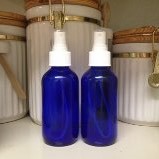
Amber or green glass work just fine, as well, but go with a dark glass over clear as it protects the essential oils from sunlight exposure. I'd also recommend glass over plastic, because essential oils are very highly concentrated and I've personally seen them eat through plastic bags. Yikes! This is exactly why a good aromatherapist will tell you to "dilute, dilute, dilute" unless you are under their direct care and they can closely monitor your reactions. These are natural plant essences, but they are potent as heck, so direct application from bottle to skin is not recommended and should absolutely be avoided on children, the elderly and on your pets. These will be diluted in lots of water so don't fret, but as a rule, keep these sprays away from your feline friends, entirely. Their little livers struggle to break down some oils and if you don't know exactly what you're doing, you can really hurt your fuzzy family members.
You will also need a small bottle of witch hazel, filtered water, and the
following essential oils:
* Peppermint
* Grapefruit
* Lavender
* Lemongrass
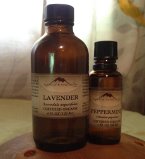
I made my recipe selections based on oils I think you either may already have, or will get tons of mileage out of after you're finished making these sprays. They are all easy to blend with and have so many great single uses, as well. So, ready to get started? Let's make something awesome!
continued . . . .


Is this scorching heat making you feel sweaty and less-than-fresh? Spray a little of this on the back of your neck or all-over right after a shower and you'll know how this recipe got its name! It'll give your skin a cool tingle that'll help keep you from overheating and clear the air of any "ripeness" that can happen during these icky, sticky months. For this you're going to use one of your spray top bottles. Add one teaspoon of witch hazel to the bottom of the bottle. A funnel definitely helps with this. Next, you are going to add your essential oils, about 15-20 drops of each. For this recipe peppermint provides the cooling sensation, while the grapefruit dials the in-your-face mint back a bit and leaves behind a fresh, citrusy scent. The sunniness of the grapefruit just says summer to me, but feel free to substitute any of the citrus oils that you like. Then, you'll fill the bottle almost to the top with water, leaving enough room to shake your contents after putting the spray top back on. Shake, spritz, done!
I find that letting it sit overnight helps the blend to, well, blend a little
better, but if you can't wait, go ahead and use it right away. I'm also about
to give you my best summer tip for beating the heat. Put your bottle in the
fridge! Aaahhh! That's the stuff! I even put my body lotion and skincare
goodies in the fridge in the summer, but this spray is really special with that
added boost of coolness.
The next spray keeps the pests away without that nasty chemical smell you get
with traditional types of bug repellant. If you're like me, and an unpleasant
scent can ruin a good time almost as much as itchy mosquito bites, this recipe
is for you!

"Don't Bug Me - Pest Repellant"
Your base for this spray is exactly like the one above, but instead of
grapefruit and peppermint oils, you're going to use 15-20 drops each of
lavender and lemongrass essential oils. Like above with your mint, there's a
superstar in the lemongrass. Mosquitoes hate it, as do a variety of other bugs.
But like above with the mint, it's a potent smell on its own and lavender
really helps to balance it and give it a sort of delicate, floral finish that
you will certainly not find with the commercially available bug sprays. Even the
natural ones I've tried sort of make you
smell like you've been rolling around with a citronella candle, but this one is
so pleasant, I've actually been asked what fragrance I'm wearing. I love being
able to say "That’s my bug spray!".
You don't have to put this one in your fridge, but do take it with you. If
you're going to be outside for a while, and no-doubt sweating a lot, it's a
good idea to re-apply it every couple of hours or so, just like you would your
sunscreen. Just keep it out of your eyes, and you're good to go!
I hope you enjoy making these fun summer spritzes and that they help you enjoy
those lazy days of summer just a little bit more. Sharing is caring so don't
forget to share the link to this article or the sprays with those you love.
Now, go outside and play!

Controlling your Cravings
What Your Body is Trying to Tell You
Food cravings. We all have them. Sometimes the hankering is healthy , but more often than not you find yourself just wanting to eat your body weight in cheesecake, chocolate or Cheetos. Knowing how food cravings work and what they’re trying to tell you can help you manage them more effectively without letting them totally derail your diet.

Most commonly we tend to crave foods, specifically carbohydrates, fat, or sugar, as an emotional response to stress or anxiety. This is due to the release of serotonin and its calming effect on the body. There are also some studies that suggest that an unbalanced diet leads to food cravings, because the body is not getting enough of the right nutrients. New research from the Monell Chemical Senses Center suggests that cravings are tied to the parts of our brain that are responsible for memories and sensing pleasure. It’s only natural that we would create pleasant memories of foods we find delicious and then seek to re-create them.

One
of the best things you can do to manage food cravings is to manage the stress
in your life. There are so many great ways to accomplish this, and it will take
a little trial and error to find the right combination of practices that work
for you. A few of the most common ones that people report having the best
success with are meditation, regular exercise and having a hobby or social
activity that keeps your work and personal life balanced.
continued . . .
continued . . .
There are also a number of herbs and supplements that may help with this. Things like GABA, lemon balm, and magnesium have a solid reputation for helping with stress, so it’s a good idea to talk to your doctor and make sure they can recommend something that will be safe for you.
Since diet plays a role in the foods you crave, it’s important to know that just because your body wants chocolate, doesn’t mean that chocolate is the only way to satisfy its needs. In fact, believe it or not, chocolate may be your body’s way of telling you to get more magnesium in your diet. You can accomplish the same thing with supplementation, raw nuts and seeds and some legumes. A general sweet tooth is usually a cry for chromium. Reach for grapes and satisfy both. Itching for a soda or a fatty snack? Calcium is what you crave, so grab some string cheese. Also watch out for pre-menstrual cravings, which can be caused by lower zinc levels. Leafy greens and root veggies, along with red meats and seafood should set you back on the right path. There are lots of valuable resources online, so if the food that’s compelling you isn’t part of your meal plan or lifestyle, spend a little time looking it up to see if there’s something better for you that will stop that craving in its tracks and nourish you more thoroughly at the same time.

If you think your cravings are about pleasure or happy memories, it might be a good idea to spend some time focused on self-care. You are the only you there is, after all. Treat yourself to a massage or a haircut. Spend the day curled up with that book that you’ve been dying to read or marathon your favorite movies. Make a date to see your favorite band in concert. Create memories that don’t revolve around food, but also feed your soul. That way when you’re looking to recreate the good feeling, you’ll be able to do it with a fun activity and not a high calorie desert. Of course there’s something to be said for indulging every now and again, so as long as you’re doing so in moderation, that slice of pie could be exactly what the doctor ordered. Bon appétit!
Stressed and Sleepy?
Time to Support Your Adrenals

It’s not something you hear about very much, but your adrenals are truly awesome. They sit at the top of your kidneys and though they weigh less than a fifth of an ounce, they’re more important than most people realize. Your adrenal glands are responsible for controlling the fight or flight response when you are under stress, help control your blood pressure and regulate the metabolism.
How do they do what they do? The adrenals secrete two hormones: adrenaline and cortisol. Adrenaline is released rapidly in response to situations which can be stressful or exciting. It appears quickly and disappears just as quickly, typically within a matter of seconds. Cortisol releases more slowly, however. There’s usually no discernible rush, like you get with adrenaline, and can it’s levels can remain elevated for up to an hour or longer. When cortisol stays elevated for extended periods though, that’s when problems can appear.
When cortisol remains constant in the body it can really wreak havoc. Anxiety, depression, memory, concentration and sleep problems, as well as weight gain, heart disease and digestive issues are all common complications that can arise when stress levels never level out. So what steps can you take to support your adrenals and keep stress at bay? Diet, exercise and supplementation are your best bets for keeping your glands in great shape.
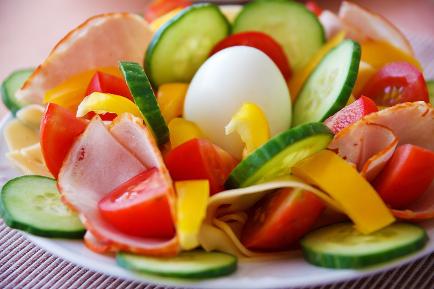
If you are what
you eat, then your diet is the first line of defense for maintaining healthy
adrenals.
continued . . .
We’re all tempted to reach for a soda or candy bar from time to time, but consuming less sugar is an important step toward keeping your adrenal glands in tip top shape, since excess sugar in the system is controlled by cortisol. Also keep in mind that the inevitable crash that comes from a sugar rush often triggers more cravings for sweets, so it’s best not to tax the adrenals unnecessarily and keep sugar consumption limited to low glycemic fruits that won’t cause trouble. Caffeine gives you an energy boost, but like sugar, it also stimulates the adrenals in a negative way. It’s best to avoid it if you can. A good source of protein will keep energy levels high without causing the blood sugar to spike. Eggs, lean meats, greek yogurt and protein powders are all great sources of protein. Healthy fats like nuts and seeds, cheese, butter and avocado are also great sources of energy. Make sure they come from a whole food and you’re doing your adrenals some good. Don’t underestimate the power of staying hydrated, either. Water keeps everything flowing properly, and the adrenals are no exception.

Regular physical activity has a variety of benefits for us, but exercise followed by a good, long cool-down is one of the easiest and most efficient ways to return your stress levels to normal. You literally get to fight those stress hormone baddies for several minutes, then return your body and mind to a state of peace when you’re finished. Do whatever makes your heart happiest, as long as it also gets it pumping, and then make sure to taper down at the end, stretch and get your breathing back to normal. You’ll feel relaxed in no time.
If your diet and exercise habits are new or sometimes hard to maintain, you can find some relief from your local supplements section. If you know you have a stressful event coming up, like a wedding or family reunion, consider starting supplementation a month to a week before the big day so you’ll have time to feel the effects. Look for things like Ginseng for physical endurance, Ashwaganda for improved sleep and anxiety, Schizandra for better digestion and Rhodiola for stress. Just be careful not to take your Rhodiola too late in the day. It has been said to boost energy and improve mood, but it can keep you up past your bedtime. Consider taking one herb at a time to see how you react before adding anything else to the mix and always follow the directions. Don’t forget to talk to your doctor or pharmacist before starting supplementation to make sure there won’t be any interactions with anything you might already be taking and to make sure your dosages are correct.
Simple changes are all that’s necessary to keep your adrenal glands in good working order. They do so much to take care of us. It’s time we return the favor and start taking care of them.
Essential Health with Essential Oils
The Oils

Last month we covered some of the basics for introducing aromatherapy into your daily routine, and now it’s time to explore some of the essential oils you can use to begin naturally scenting yourself and your home. Because so many of us are on a budget these days, it’s smart to test the waters with oils that are excellent multi-taskers and the good news is, there are a few great ones that can get you started.
As mentioned in the previous article, quality should always trump price, but don’t fret! The top oils are tops because they won’t make you wrinkle your nose or empty your wallet. A half ounce bottle will last you a lot longer than you think, due to the highly concentrated nature of the oils, so don’t worry if you think your shopping bag seems small for what you’re spending. You’ll no doubt be using them for everything you can think of, so that initial small investment will pay off in the first few drops. Ready to sniff out something awesome?
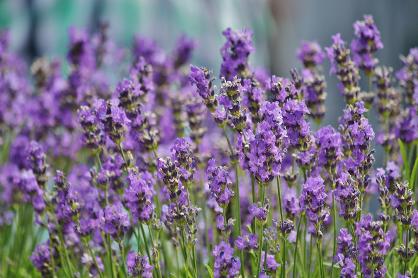
Lavender – No essential oil list would be complete without mentioning Lavender, and with good reason. It’s so useful! You can use lavender oil for all kinds of skin issues, such as minor kitchen burns, rashes, acne, insect bites and as a disinfectant for cuts and scrapes. Lavender oil is typically noted as being okay to apply neat, or without the use of a carrier oil. This is because it soothes so many skin issues, but it’s still smart to exercise caution if you are already have sensitive skin. Another great thing about lavender oil is that the calming nature of the oil doesn’t just stop with the skin. It’s wonderful for soothing and balancing for your emotions and psyche as well. Inhaling lavender draws it into the amygdala, which can help quell sleep disturbances, anxiety, stress headaches and so much more. Make sure you look specifically for Lavandula angustifolia, though. There are variations such as Spike Lavender, and Lavandin which are still wonderful oils, but don’t cast as wide a net as far as uses. Apply a few drops to a tissue and tuck it inside your pillow case for sweet dreams and restful sleep.
Peppermint
– Thanks to the natural occurrence of menthol in the peppermint plant, this
little wonder provides a cooling effect that is fantastic for so many things. Use
peppermint oil (Mentha
piperita )for intestinal
discomfort like heartburn, and upset stomach. Make it your go to for headaches,
respiratory complaints, overworked muscles, and take a whiff for a quick
pick-me-up during the midday slump. You can also add peppermint oil to a cotton
ball and place it near any areas where you think pests like insects or mice may
be getting inside your home. They can’t
stand the scent and will run the other way, plus you get clean karma because no
harm came to the little guys. The menthol may burn the skin, so always dilute
peppermint, but it’s handy, refreshing and wonderful when added to a spritzer
bottle full of filtered water for hot weather. Give it a good shake and get
some of nature’s free air conditioning for your skin and a fresh smelling
alternative to bug spray.
continued . . .
Tea Tree – Tea Tree oil is sometimes fondly referred to as a “medicine chest in a bottle” and boy, is it ever awesome. Aside from treating a variety of skin issues, like warts, dandruff, athlete’s foot and cold sores, Melaleuca alternifolia is an amazing disinfectant for countertops, door handles and more. This makes it super valuable to you during cold and flu season because it is both antibacterial and antiviral. Because it’s antifungal as well, if you forget to take your clothes out of the machine before mildew sets in, run the load again, this time adding a few drops of tea tree to the water and freshen your garments and your washer at the same time.
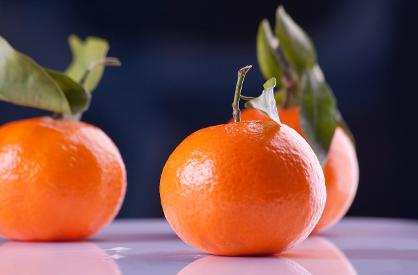
Orange – You could easily substitute any of the citrus oils in your go-to kit, but orange oil (Citrus sinensis ) usually carries the lowest price tag. D-limonene, which is found in the peels of citrus fruits, is a very powerful antioxidant that’s great for health and also has awesome cleaning power when added to household cleansers. You might also consider using it in skin preparations, as orange oil has been shown to promote collagen production, promote circulation and encourage detoxification. Keep in mind that it can increase the effects of the sun’s rays, so it’s best not to use it right before going outside. It’s great for the digestion and it’s praises have been sung by Chinese doctors since ancient times. Orange is wonderful for lifting the spirits and easing stress and anxiety. Diffuse it in your home whenever you need a happiness boost.
Eucalyptus – Originally prized by Australian aborigines, Eucalyptus oil (Eucalyptus Globulus) is another versatile oil with a long list of benefits. It’s phenomenal for a variety of respiratory complaints making it great in steam treatments or added to humidifiers. Because of it’s refreshing scent, it’s often used in stress blends because it stimulates the brain and rejuvenates the spirits. It’s often found in natural lice treatments, dental care and products that treat skin infections. It can be added to creams to soothe muscle and joint pain and is a fabulous deodorizer so it can be diffused in a room with particularly lingering smells to kill germs and bacteria. Because it is cooling, mix it with peppermint oil and apply it to a cool, wet cloth to draw out a fever.
These are just a few oils to help you begin your aromatherapy journey and will offer you the best bang for your buck. There are around a hundred to choose from, so spend some time in the beauty section of your natural foods store and start sniffing out a winner. You can also look for small sample kits from reputable companies that will allow you to start with a lot of the single oils I mentioned, and usually for very affordable price. Don’t be afraid to experiment with blending, as well. Many essential oil companies provide you with a list compatible oils, either on their bottles, printed materials or websites, that will help you create a great combination that are especially suited to your needs and nose. Aromatherapy is first a pleasurable experience so above all, have fun and enjoy your creations!

Essential Health with Essential Oils
The Basics
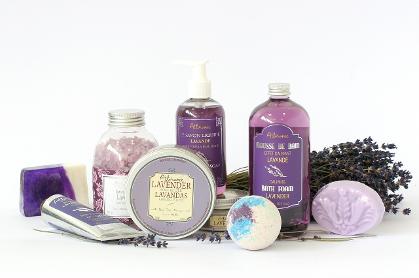
Let's talk about essential oils, because they seem to be showing
up everywhere. They’re in DIY recipes and pre-made household and beauty
products. Some people are even building businesses around them. They've become
pretty popular lately, so I've put together a basic guide to these lovely
liquids so even a brand new beginner can use them safely and sensibly. This is
the first of a two part series on essential oils so let's get cover the
fundamentals and next month we'll explore some of the most popular oils and the
wonderful things you can do with them.
First of all, what are essential oils? Simply put, they are the highly
concentrated essence of a plant, extracted by various methods in a liquid form
for therapeutic purposes. These oils are then applied to the skin, inhaled, or
ingested as a means to supplement health and well being. Your method may vary
depending on what you're trying to accomplish, so let's take a look at how each
method works.

Direct Application - When applying essential oils to the skin, it's important to consider a few factors before just dousing yourself in whatever smells pretty. First of all, it's wise to remember that you are using an extremely potent substance, so dilution will most likely be necessary to prevent irritation. Mixing a few drops into a small amount of a high quality unscented lotion or carrier oil is always advised, and most good oils will provide you with a proper dilution ratio to follow for safe application. Also, remember that the skin is permeable, so what you put on you, you’re putting in you. This is where it's wise to take the time to really research what you're buying, but more on this later.
How do you get the best out of a direct application?
Massaging the area first or applying heat, either yourself or through an
aromatherapeutic massage increases circulation and can enhance absorption.
Also, unless your ailment is specifically located, such as a rash of blemish,
you may have better luck applying it to thin skinned areas or places where you
have sweat glands. For a neat trick to test your circulation, rub a freshly
sliced clove of garlic on the bottoms of your feet and see how long it takes
before you begin to taste it. This is exactly the way that nicotine or birth
control patches work.
continued . . . .

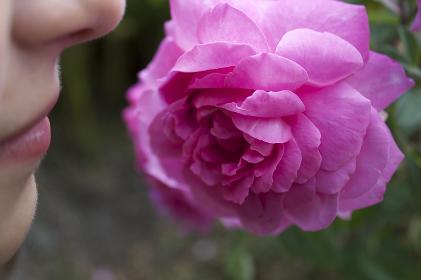
Inhalation- Another great way for essential oils to enter the bloodstream is inhalation through the nose or mouth. They can be diffused or sprayed into the air, breathed in during a steam treatment or applied to a tissue, handkerchief or cotton ball and simply sniffed. The scent molecules impact the brain almost immediately as they travel through the limbic system. This part of your marvelous mind controls stress, respiratory and circulatory function and hormones.
It also controls memory, so don't be surprised if sniffing a rose essential oil recalls a romantic gift from a suitor or if cinnamon takes you back to the sweet smell of grandma's kitchen. This is why it's good to know that no matter how good an oil might be for a certain ache or pain, if you don't like the smell of it or it brings back unpleasant memories for you, it won't be effective. The good news is, there are so many to choose from, if sandalwood doesn't float your boat, there's going to be something that will.
Ingestion- The third way to introduce essential oils into the body is to
swallow them either by mixing them into a drink or taking them inside an empty
capsule. This method is a bit controversial right now, because it used to be
widely accepted that oils are not safe for consumption unless under the
guidance of a licensed aromatherapist or holistic practitioner, but a couple of
the top brands promote use in this way. So who is right? Ultimately the
decision to consume your oils is yours, but there are some good things to know
while you're checking things out. While application via the skin or inhalation
may not cause any concern, swallowing your oils can be toxic to the kidneys and
liver. Also, when oils must travel through the digestive system before hitting
the bloodstream, the way they are broken down can change their effectiveness
and effects. You will also need to be on the watch for potentially harmful drug
or even supplement interactions. Erring on the side of caution where your
health is concerned is always smart.
When it comes to quality, an organic label is best, but when that's not
possible, it’s wonderful for your pocket book to know high dollar doesn't
always equal safe or clean. Sometimes the fancy stuff is cut with questionable
chemicals or processed multiple times to produce a product that might still
smell great, but doesn't offer you or your health the quality you deserve. Also
be watchful of the difference between fragrance oils and essential oils. They
might come in a similar looking bottle or even have a name that sounds the
same, but a fragrance oil merely smells nice, and in some cases can contain
chemicals that are known hormone disrupters. Yikes! Best to stick to the real
thing if health is your aim.
As a last and final note, please exercise extreme caution when applying
essential oils or using them around your pets. While some will be safe and even
beneficial, always verify first with your traditional or holistic vet or before
use. Proper dilutions are critical and some oils are toxic and even deadly,
especially to cats. They lack specific enzymes that allow their livers to
properly process certain essential oils. You might be willing to risk it on yourself,
but your furry friend can't say "Hey! This doesn't feel right", so
please don't chance it and talk to a credentialed expert.
Now that we've laid the groundwork, next month we'll explore some of the most
useful essential oils. If you're like me and you can't wait that long, there
are a ton of amazing resources out there to get you started. Look for books by
top experts and teachers like Robert Tisserand, Valerie Ann Worwood and Kurt
Schnaubelt or check out some free classes put on by local or online
aromatherapy schools. Happy sniffing!
The Secret Language of Food
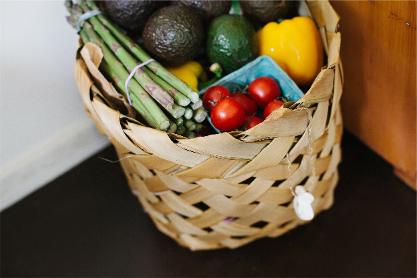
I've read two articles recently about how two of the top food additives we're told to avoid are getting name changes to sound not only benign, but in one case downright healthy. According to new reports, Aspartame is about to be known by the name "Amino Sweet" and High Fructose Corn Syrup has already been shortened to the harmless sounding "fructose" in some big name products that are currently on the shelves in your local grocery store. For consumers, this kind of blatant deception can be frustrating, especially if we don’t know what we need to look for. As I started doing more research it became apparent the lengths companies will go through to hide these things in plain sight or pass them off as safe when they are anything but.
Unless you are eating a totally unprocessed diet, chances are you're having to scan through a list of ingredients that can overwhelm even the most seasoned healthy eater, especially if you have kids in tow or are just in a hurry. I’d like to share some aliases to look for when you want to avoid some of the major bad guys when it comes to chemicals in our food. Below are some of the names you might not know to look out for.
Monosodium Glutamate, known to most as MSG, is at the top of most
nutritionist’s list of ingredients to avoid.
It’s been known to cause a whole host of bad symptoms from high blood
pressure and blood sugar, to obesity and a fatty liver. It might flavor your
food, but it comes at a cost to your health.
While it seems easy enough to scan a label for it by name, it can also
be found in up to 40 different common food additives. Some of these may even be found on shelves of
stores specializing in health foods. The
most common names you’re likely to see on labels are hydrolyzed
vegetable protein, textured vegetable protein, and yeast extract. You may also
find traces of MSG in gelatins, and soy and whey proteins. If you have been
told to avoid MSG, I recommend spending a little time online and getting
familiar with places it may be hiding. There is quite a lot of information out
there.

If you’ve been diagnosed with Celiac Disease, your doctor
has probably already familiarized you with the hidden sources of gluten, but if
you are new to the game or are avoiding gluten for other reasons, it pays to
know its other monikers. The most common source of gluten is wheat, but did you
know that you may need to avoid certain types of oats, spelt, einkorn, rye, barley, malt and
brewer’s yeast? This is another additive that can be very tricky to spot. When
in doubt, a lot of natural food stores can provide you with a list of items on
their shelves that are considered to be gluten free and you can just stick to
what you see.
continued . . . .
Then, there are the sugars. As a good rule of thumb, if it ends in –ose, it’s likely a form of sugar, but if you’re diabetic or just trying to cut sweets out of your diet, there are some other sneaky sources you might want to look for. Brown rice syrup, fruit juice concentrate, agave nectar and barley malt syrup are a few that are common terminology when it comes to packaged snacks and treats. Also be on the lookout for Sucanat, which is sometimes called evaporated cane juice. A lot of times these are marketed as healthier alternatives to sugar, and while they are slightly better than the refined white stuff, they are still highly caloric and can cause blood sugar to spike.
While not an additive per se, GMOs (genetically modified organisms) are something to consider as well. It’s a hotly debated topic at the moment and while on the surface there are good reasons to be in favor of using GMOs, such as less need for pesticides and a higher yield of crops, the long term affects of consuming GMO foods is still not known. If you’d rather be safe than sorry, some common foods that use GMOs are corn, soy, canola or cottonseed oils, certain sugars and dairy products not bearing a hormone-free label. The best thing to look for if you want to avoid GMOs are items that are considered organic. You may also see products that will state they are GMO-Free or are Non-GMO Project Verified, and these are safe to consume.

Keep in mind that if you are looking to avoid any ingredient for health reasons, these are just a jumping off point. Talking to your doctor and doing your research are still important, even if the process seems daunting at first. There are plenty of food lists and infographics out there that can be printed, laminated and kept in your wallet or handbag for easy reference next time you’re out doing your shopping. If you’re dealing with serious food allergies or health concerns consider locating support groups and online forums for valuable resources you may not know exist. They can steer you in the right direction and can likely share recipes, too. Any time spent creating wellness with better food is worth it. Happy and healthy eating!

C’mon Get Happy, Naturally!
Depression. It’s almost a fact of life these days. 1 in 10 adults have reported experiencing it according to the CDC. Sometimes it’s affected by the seasons. Others we experience due to the stress of life or after the loss of a loved one. Chances are, you or someone close to you will face depression at some point, if not already. For mild to moderate depression, you needn’t abandon hope. There are things you can do to get your happy back.
Start with Supplements: A good fish oil, or sea algae supplement for vegans, will do wonders for your brain. Aside from providing you with nutrients that will help memory and offset Alzheimer’s, omegas also help battle depression. Omega 3s have been shown to be lacking in depressed individuals. Vitamin D is a biggie, especially in the winter when our exposure to the sun is more limited. It’s not at all uncommon to be deficient and supplementation is simple. St. John’s Wort is very popular for treating mild to moderate depression, with some studies showing it to be equally as effective as some prescription medications. You may also want to look for SAMe and 5HTP. There is some evidence that both may be helpful as 5HTP is a precursor to serotonin and SAMe may increase the level of serotonin, dopamine and norepinephrine in the brain. These are all contributors to feelings of well being and energy needed to stay motivated when times are tough. Just make sure to talk to your doctor or pharmacist before taking any supplements to make sure your dosages and all possible interactions have been accounted for.
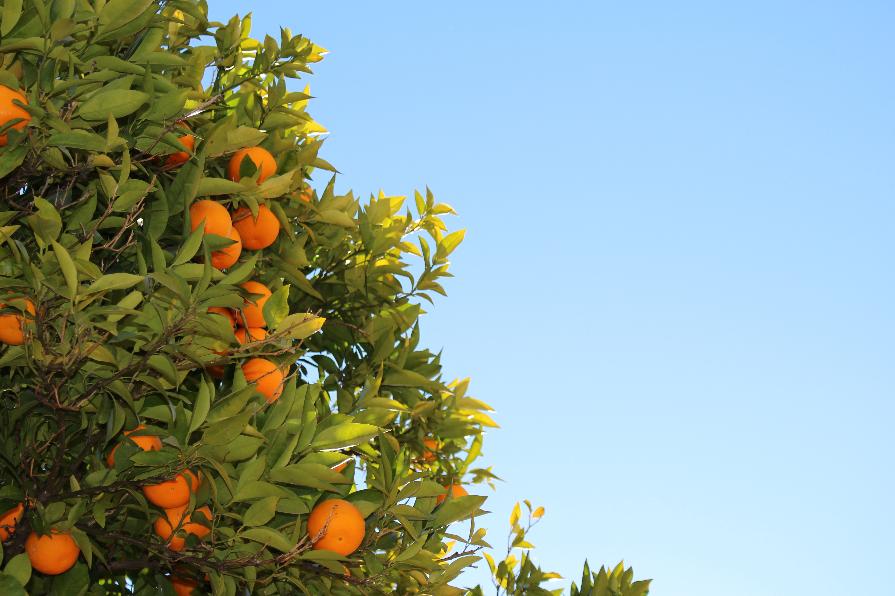
Follow Your Nose: Citrus essentials oils of orange, lemon, lime, grapefruit and bergamot are all known to lift the spirits and leave behind a bright, cheerful scent. Mix your favorites together and diffuse them in your home or put them in an unscented cream or oil and wear when gloomy. You’ll see it has a lot of a-peel! If fruity scents aren’t your thing, look for rose or chamomile to brighten your mood. The idea is to surround yourself with something that you like, so if it isn’t your favorite, it probably won’t do the trick. Just make sure you’re using real essential oils, as fragrance oils made from chemicals don’t have the same effect on the limbic system as the real thing.
Get By with a Little Help From Your Friends: The last thing you probably want to do when you’re down is be social or even put on pants, but when someone tosses an invite your way to go out dancing or come over for game night, go! Being around people who care about you and make you laugh is exactly what the author ordered. Make the extra effort and spiff up a little, too. Taking the time to take care of yourself is a must. Do your hair. Shine your shoes. Heal your soul.

Fuzz Therapy: If your finances and lifestyle allow, consider adopting a pet. Furry companions require exercise and playtime, which will force you out of your rut. They also require serious snuggles which will boost your mood faster than a cat comes running at the sound of a can opener. I speak from personal experience when I tell you that my dog was sometimes the only reason I managed to get out of bed and go to work during some of my darker days. It was my responsibility to feed him so I made myself go for him. Returning home to his grateful, wagging tail was entirely worth it.
Get Spiritual: People with a solid spiritual practice tend to experience less depression that those that don’t. Prayer can help put you back in touch with your heart and help you find that light at the end of the tunnel. Meditation is something that’s helpful no matter what faith you belong to. Volunteer to do some community outreach at your place of worship. If you’re not religious, find a local group of Secular Humanists doing good things in your area and get involved. Doing good feels good. Isn’t that what it’s all about, anyway?
By taking an active role and knowing your natural options, you can treat your depression. Of course, if you think there’s any possibility you may be suffering from depression that is moderate to severe, please consult with your doctor. If your depression has reached the point where you have considered taking your own life, I want you to have this number: 1-800-273-8255. It will connect you with the National Suicide Prevention Lifeline and someone in your area will help get you through it. You are not alone. The world still needs unique and wonderful you and don’t you ever forget it!
|
|
Detoxing
Fad or Fab?
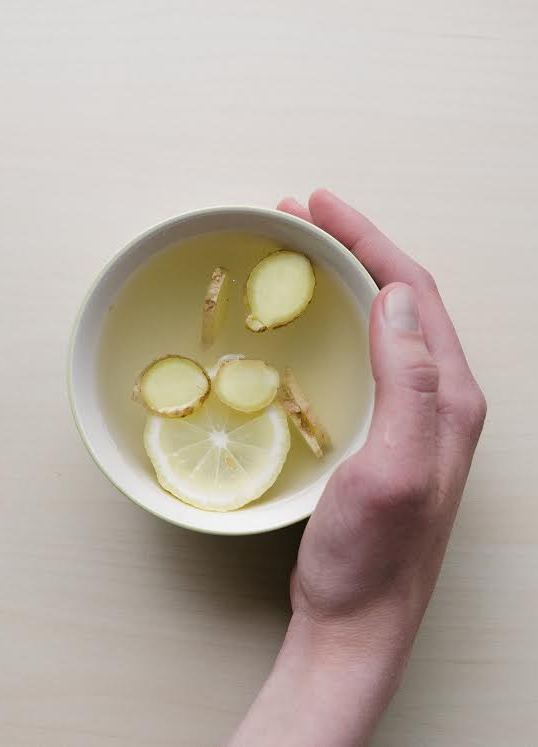
It’s the start of a new year and many people find it’s a good time to begin creating healthier habits. One of the popular ways to accomplish this is with a cleanse, also known as a detox. There seem to be a lot of opinions about detoxing making their way around the internet lately. Some people feel the body already cleanses itself and that detoxing, especially extreme forms or the practice, are unnecessary. Others feel it is a great way to reset the system after an especially indulgent holiday season or just before starting a diet. Regardless of which side of the debate you are on, there are some simple practices you can incorporate that can assist your body in the detoxification process without going to extremes.
First things first, what is a detox? Simply put, it is the removal of toxins from the system in an effort to restore it to a state of balance. What causes the body to become unbalanced in the first place? Well, in a word, everything. Do you breathe the air, either inside or out? Sorry, but there are toxins present there. Do your foods or skincare products contain any chemical ingredients? Yep, those are toxins, too. Even normal metabolic functions release toxins into the system. The result of these can show up as excess weight, headaches, issues with the skin and a variety of other symptoms.
So what’s a person to do? Limiting exposure to things like cigarette smoke, caffeine and alcohol will help considerably. Seeking natural alternatives to things you use every day, like toothpaste and deodorant can make a difference, too. You can also swap out your household cleaners for ones that are non-toxic. If cost is a concern, there are tons of DIY tutorials online to make everything from laundry detergent to lipstick with chemical-free ingredients. You can also clean up the air inside your home with the use of an air purifier or by simply placing a few houseplants in rooms you spend the most time in.
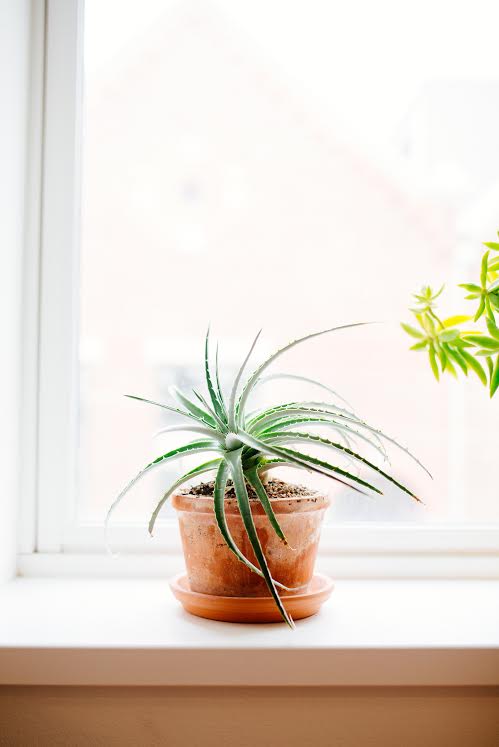
Stress hormones also contribute to the production of toxins in the system. A regular meditation and exercise practice can help immensely, as can small things like having a special tea time to start or end your day, going for a drive, or listening to your favorite song. Anything that brings a smile to your face is switching off stress hormones like cortisol and switching on the feel good hormones like oxytocin, endorphins and serotonin instead. Now you have an excuse to catch that comedy your co-workers are talking about!
Tweaking your diet can allow your body to eliminate toxins more efficiently. Drinking more water is one of the easiest things you can do to aid in this process. Try adding things like lemon or cucumber for flavor and variety. Upping fiber intake can allow for more optimal colon function. Aside from taking fiber supplements, you can add chia or flax seeds to your smoothies or baked goods. Try snacking on more raw fruits and veggies, too. A good probiotic will aid the colon by giving you more healthy bowel eliminations and repopulating the gut with beneficial bacteria. Does your liver need a little love? Milk thistle and dandelion root are noted liver cleansers, and you can find them in tea form if you’re not keen on capsules. Cranberry juice and D-Mannose have considerable benefits for your urinary tract, especially if UTIs are a problem for you. Consider taking a good multivitamin, as well. It will help fill in nutritional voids that your diet isn’t meeting which will free it up to work on repairing itself.
Just make sure you talk to your doctor before beginning any detox to make certain there won’t be any side reactions with any medications or natural supplements you might already be taking. The goal is to increase health, not harm it. Happy detoxing!
Immunity Boosters
Your Guide for Staying Well This Winter
The days are shorter and that familiar chill is in the air. Yes, that’s right. Cold and Flu season is upon us. While no one plans to get sick, the good news is you can make a plan for wellness! Armed with your D.R.E.A.M. Team of immunity boosters, you can look forward to cozy nights by the fire instead of curling up with a box of tissues.
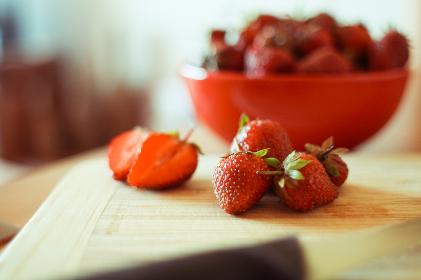
Diet: A healthy diet will go a long way toward keeping your defenses up as the weather cools down. Of course everyone reaches for the orange juice to get their Vitamin C, but you can also get it from your salad. Foods like spinach, tomatoes and bell peppers will also fight free radicals and protect healthy cells. Grab a handful of nuts for a snack and you’re getting Zinc, which has been known to ease cold symptoms. Cruise your supplements aisle and look for things like Sambucus, touted for its ability to fight viruses or Oil of Oregano for its powerful antioxidant and antibiotic properties. My favorite during this season is Olive Leaf Complex, which has been used medicinally for centuries and targets only certain microbes while allowing the good bacteria to remain. It’s also a good idea to try to get in some additional probiotics during this time. They will strengthen the intestinal wall and stimulate the production of T-cells. If you’re already taking a probiotic supplement, you can mix some yogurt or kefir into a smoothie or look for other fermented foods like sauerkraut or kimchi and work them into your winter recipes. Don’t forget to drink plenty of water!
continued . . . .

Rest : With nighttime arriving earlier, it’s natural that your body will require additional rest. For daytime fatigue, a good Vitamin D will help mimic the sun’s rays, but nothing beats a restorative night’s sleep. Though life may not always allow for a full 8 every night, aim for at least 6 quality hours as often as possible. Making the time now will prevent you from having to rest under doctor’s orders later.

Exercise: We know it keeps our bodies fit but regular exercise during the colder months will keep your immune system in optimum shape, as well. You don’t have to spend money on a gym with a heater or bundle up for a jog, either. Search for yoga workouts online or put on some groovy tunes and dance the flus away.
Affirmations: Attitude is everything. Making a conscious decision that you are going to remain well and vocalizing that to God, the Universe, your dog or anyone else who will listen, will keep you in the right frame of mind and keep nasty germs from attaching themselves to you. My morning ritual always includes an affirmation of health. It can be as simple or complex as you like, just remember to keep it positive. Below are a few examples of ones I like and use:

I listen to and honor what my body needs to maintain health.
I am grateful for my health and actively nourish my body with good foods and practices.
Every day I feel better and better.

Meditation: The benefits of a daily meditation practice are practically endless and even mainstream medicine is taking notice. One of the best things you can do to prevent illness is to reduce stress and meditation is a wonderful way to accomplish this. You don’t have to belong to a specific religion or be a master to meditate, either. It can be as easy as observing your breath for a few minutes or visualizing your favorite place in nature.
You don’t have to let whatever is going around catch up to you. Taking a proactive approach early on can help you hold on to your time and money down the road. This means more opportunity to enjoy all that the colder months have to offer. Here’s to your health!
Know Your SPF
Sun Protection Foods
by
Regina Ann

Here we are in the heart of Sun Season, at least in the Northern Hemisphere. With the Summer Sun shining and more of us spending time in it I thought it a good time to talk about SPF. Most of us think of Sun Protection Factor ratings when we see SPF but I want to share another SPF with you, Sun Protection Foods. The number of whole foods which supply precisely what our body’s need for sun protection may just surprise you.
Commonly when people think of soaking up the sun we reach for a bottle of sunscreen. Here are two reasons I am not one of those.
Wearing sunscreen blocks Vitamin D. Research continues to support that Vitamin D deficiency is one of the more critical conditions we currently face. Symptoms of Vitamin D deficiency, as shared by Natural News* includes:
o Flu
o Muscle weakness
o Psoriasis
o Chronic kidney disease
o Diabetes
o Asthma
o Periodontal disease
o Cardiovascular disease
o Schizophrenia and Depression
o Cancer
Most sunscreens contain toxic chemicals. There are more safe sunscreens on the market today than there were when I began this healthy makeover more than a decade ago however, one must know exactly what to look for on labels to avoid products that are misrepresented as “natural.” There is no standard for “natural” in product labeling therefore, even petrochemicals linked to cancer and banned in other countries may be included in a “natural” label because they come from natural sources. Here is a good sunscreen resource
http://www.ewg.org/2013sunscreen/
My sun protection plan includes Sun Protection Foods, aloe vera, coconut water, purified water and zinc oxide (for extended sun times). Since sunburn is a type of inflammatory response, anti-inflammatory foods are highly beneficial. Nurturing healthy, hydrated skin cells increases the body’s ability to more effectively manage sun exposure. That being said, here is a listing of Sun Protection Foods that you can incorporate into your healthy lifestyle.

Cocoa (Dark Chocolate): Dark chocolate is high in antioxidants that can protect the skin from sunburn and skin cancer. Research I have found indicates the higher the cocoa percentage, the better with 70% being the least I recommend if using it as an antioxidant source. Milk should not be added to the chocolate as it interferes with the absorption of the antioxidants. Two ounces of dark chocolate daily is the typical recommendation.
Green and Black Teas: Rich in one of the most powerful botanical antioxidants known to date, green and black teas protect from the inside out. Green tea is my preferred choice. I have practiced a green tea following my meals ritual for years after learning of its benefits to my digestive system. Two to four cups per day is the typical recommendation.
Vitamin C: We cannot produce our own Vitamin C therefore, we must consume it. While there are plenty of supplements on the market here are some foods rich in Vitamin C that you can include.
· All Citrus fruits
· Melons
· Dark leafy greens
· Peppers
· Carrots
· Cherries
· Apples
· Kiwi
· Broccoli
· Berries
· Peaches
· Apricots
· Plums
· Pineapples
· Pomegranates
· Tomatoes
· Chard
Vitamin E: One of the more commonly known health nutrients, here are some foods you can enjoy and eat your Vitamin E.
· Almonds
· Peanuts (a common food allergen so be aware)
· Wheat germ
· Sunflower seeds
· Pistachios
· Avocado
· Whole grains
· Oats
· Broccoli
· Spinach
· Kiwi
· Tomatoes
· Chard
Note: Cooked tomatoes offer more sun protection that uncooked tomatoes.
Turmeric root: Turmeric contains curcumin which offers superb anti-inflammatory benefits. Turmeric may be sprinkled on food or cooked with.
Hydration: Plenty of purified water is as essential to healthy skin as it is to a healthy body. Our bodies are (depending on sources) 60-70+% water so replacing what we lose through respiration and perspiration is vital to maintain optimal health. Along with water I choose to drink Coconut water to keep electrolytes balanced and everything humming along.
Knowing your Sun Protection Foods provides you with options. Sunscreen is always a good idea if you plan to be in the sun for extended periods of time. Do your homework and be certain the sunscreen is all natural. In my opinion you just can’t beat a quality zinc oxide. Nurturing your body with Sun Protection Foods is good for a healthy body whether you are in the sun or not.
Now you Know Your SPFs, Enjoy your summer!
*http://www.naturalnews.com/035089_vitamin_D_deficiency_signs_symptoms.html
DIY Sun Care

To complement my “Know Your SPF” Article I wanted to offer some of my favorite DIY Sun Care. These are wonderful for all around skin care so feel free to pamper yourself anytime.
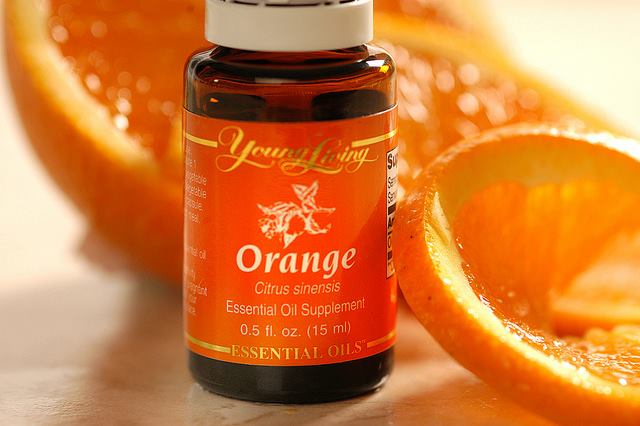
Soothing After-Sun Cream
4 oz coconut oil (for external use)
7 drops Lavender essential oil
or 7 drops Orange essential oil (for those who don’t do Lavender)
continued . . . .
continued . . . .
I bought two jars of coconut oil and used one to mix my After-Sun Cream in and the other to mix an Energy Balancing blend that I love to keep on hand. Coconut oil can be a hard cream, soft cream, or oil texture depending on the temperature you store it at. Whatever your temperature choice, be consistent for a happier oil.
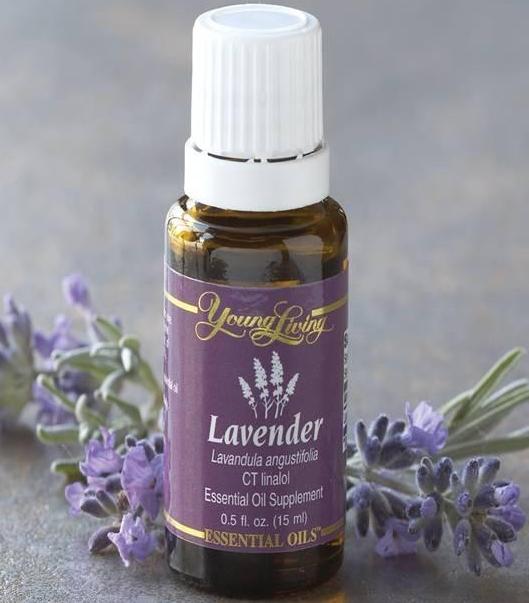
Soothing Sun Spray
8 oz Witch Hazel (I use Thayers brand)
13 drops Lavender essential oil
or 7 drops Orange essential oil (for those who don’t do Lavender)
Use a clean and sterile spray bottle to mix your Sun Spray in. Mix and enjoy! For a Cooling Spray add 1 drop of Peppermint essential oil. This is awesome for “power surges” a.k.a hot flashes or any time you want to cool down. Be sure to NOT spray this mixture into your eyes!


Psoas Yoga Videos
http://www.youtube.com/watch?v=IJuNXAZRnag
http://www.youtube.com/watch?v=aMbVsZ9f3j0
Psoas Stretch

01 Track 1.mp3
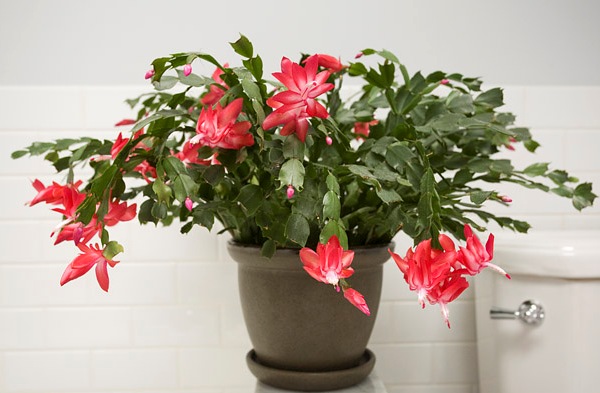
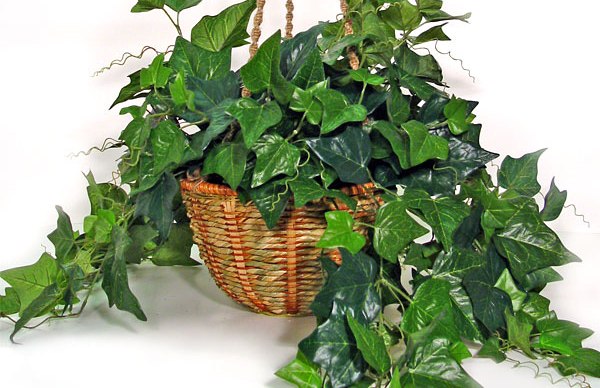
With many of the planets population spending more and more time indoors I wanted to offer some natural ways of breathing clean air indoors. I recently had to retire an indoor air purifier because it was making me sick. This led me in search of natural ways to clean the indoor air and the results have been wonderful.
There are a many articles on the web about NASA and experiments with plants and indoor pollution. My bottom line is that plants do clean the air, bring nature indoors, reduce stress and more. The top 10 plants as shared by The New Ecologist (thenewecologist.com) are as follows.
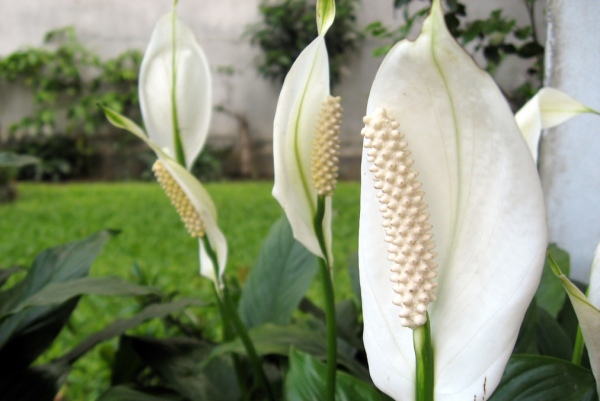
- The Feston Rose plant also known as Lantana. Lantana is a beautiful flowering plant that is very low maintenance. The leaves of the lantana offer a pleasant aroma so you get clean air and natural fragrance.
- Devil’s Ivy is prolific ivy with a variegated leaf. It is the most common houseplant available. This is perhaps the hardiest plant I know and it will grow like crazy with little care. You can also easily trim this plant, take the trimmings and put them in water for a few days and replant in soil as soon as you see roots growing.
- Phalaenopsis is a beautiful flowering houseplant with very few leaves but lots of flowers. This is a perfect plant for indoors as it cannot tolerate direct sunlight.
- English Ivy is considered the ideal houseplant for
people with pets. It filters indoor pollutants such as fecal particles
keeping your indoor air fresh. This is another prolific grower so you will
either want to trim it back or give it plenty of space. It is poisonous so
be certain to keep it out of reach of children and pets.
- Parlor Ivy, also known as Philodendron make beautiful house plants with their heart shaped leave and delicate flowers of various colors. This is a climbing plant so you should have vertical space to offer it room to climb.
- African Violets are delicate plants with equally
delicate flowers. One of my personal favorites, these plants require
moderate light and temperature and grow best with regular feedings of
plant food mixed with filtered water.
- The Christmas Cactus is commonly seen on store
shelves this time of year. With its glossy leaves and beautiful flowers,
the Christmas Cactus is a great gift to enjoy as it cleans the indoor air.
- Yellow Goddess has beautiful trumpet like golden flowers. It makes me think of a yellow lily. It needs bright light but not directly from the sun. Its small size makes if perfect for apartments and small spaces.
- Garlic Vine has beautiful bell shaped flowers but be warned, the flowers and leaves smell like garlic when they are crushed thoroughly. The upside is that the leaves, roots and flowers can be used to treat cold, fever, sore throat and breathing problems much like garlic.
- Peace Lilys certainly live up to their name. These are the most peaceful plants I know of. The atypical flowers are white and look much like one of the leaves decided to turn into a flower. This plant needs to stay away from direct sunlight and be kept moist.

For those who really want to boost the air quality indoors you can add the warm glow of a Himalayan Salt lamp to your room. These lamps are known as mother natures ionizing balancer. They are touted to help with allergies and asthma as well as provide protection from electromagnetic frequencies. We love ours and the soft amber glow they emit is peaceful and calming.
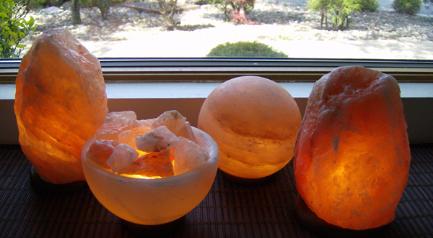

These are just a few examples of creating a naturally indoors. Truth is that as you bring natural balance to your inner space you create harmony. The harmony you create for your inner space carries through to your outer space. In this manner, bringing nature indoors not only benefits the air you breathe but the energy you dwell in and carry with you in your daily life.
Empowering Transformation
with
Regina Ann
archived shows

|
Balance the Breath.pdf Size : 159.266 Kb Type : pdf |

|
Wellness Highly Beneficial Hemp Health.pdf Size : 86.111 Kb Type : pdf |

|
High Frequency Foods.pdf Size : 137.9 Kb Type : pdf |

|
Wellness Benefits of Lavender.pdf Size : 125.38 Kb Type : pdf |

|
Psoas.pdf Size : 780.818 Kb Type : pdf |

|
Self Power Article.pdf Size : 126.709 Kb Type : pdf |

|
Tai Chi for Health-1.pdf Size : 125.794 Kb Type : pdf |

|
Transforming Thought.pdf Size : 129.239 Kb Type : pdf |

|
Feelings.pdf Size : 155.315 Kb Type : pdf |

|
CST Article 1.pdf Size : 128.454 Kb Type : pdf |

|
Sacral Chakra.pdf Size : 150.682 Kb Type : pdf |

|
Root Chakra.pdf Size : 150.94 Kb Type : pdf |

|
Heart Chakra.pdf Size : 152.021 Kb Type : pdf |

|
Crown Chakra.pdf Size : 113.099 Kb Type : pdf |

|
Meditation.pdf Size : 132.308 Kb Type : pdf |

|
Lighthouse Affirmation.pdf Size : 80.406 Kb Type : pdf |

|
Rise Mantra.pdf Size : 29.837 Kb Type : pdf |

|
Reiki Me.pdf Size : 740.922 Kb Type : pdf |

|
Congee Recipe.pdf Size : 190.423 Kb Type : pdf |

|
Healthy Skin Article.pdf Size : 124.596 Kb Type : pdf |

|
Healthy Skin Part 2.pdf Size : 134.103 Kb Type : pdf |

